- Fantastic all-round ability
- Excellent V6 diesel and 10-speed auto
- Loaded with standard equipment
- Ride on huge 21s isn't perfect
- Third row of seats isn't massive
- Umm...
It’s undeniable that Ford launched the biggest car of 2022 with its new generation Ranger. It’s a product that is so etched into the Australian car landscape that it’s already seemingly selling up a storm. Regardless of the spec chosen – from the top-spec Raptor to the XLS – it is a world-beating (and Australian developed!) product. But while there’s no doubt as to how important it is, we think we’ve found a product that’s even more relevant to more Australians: the 2023 Ford Everest Platinum.
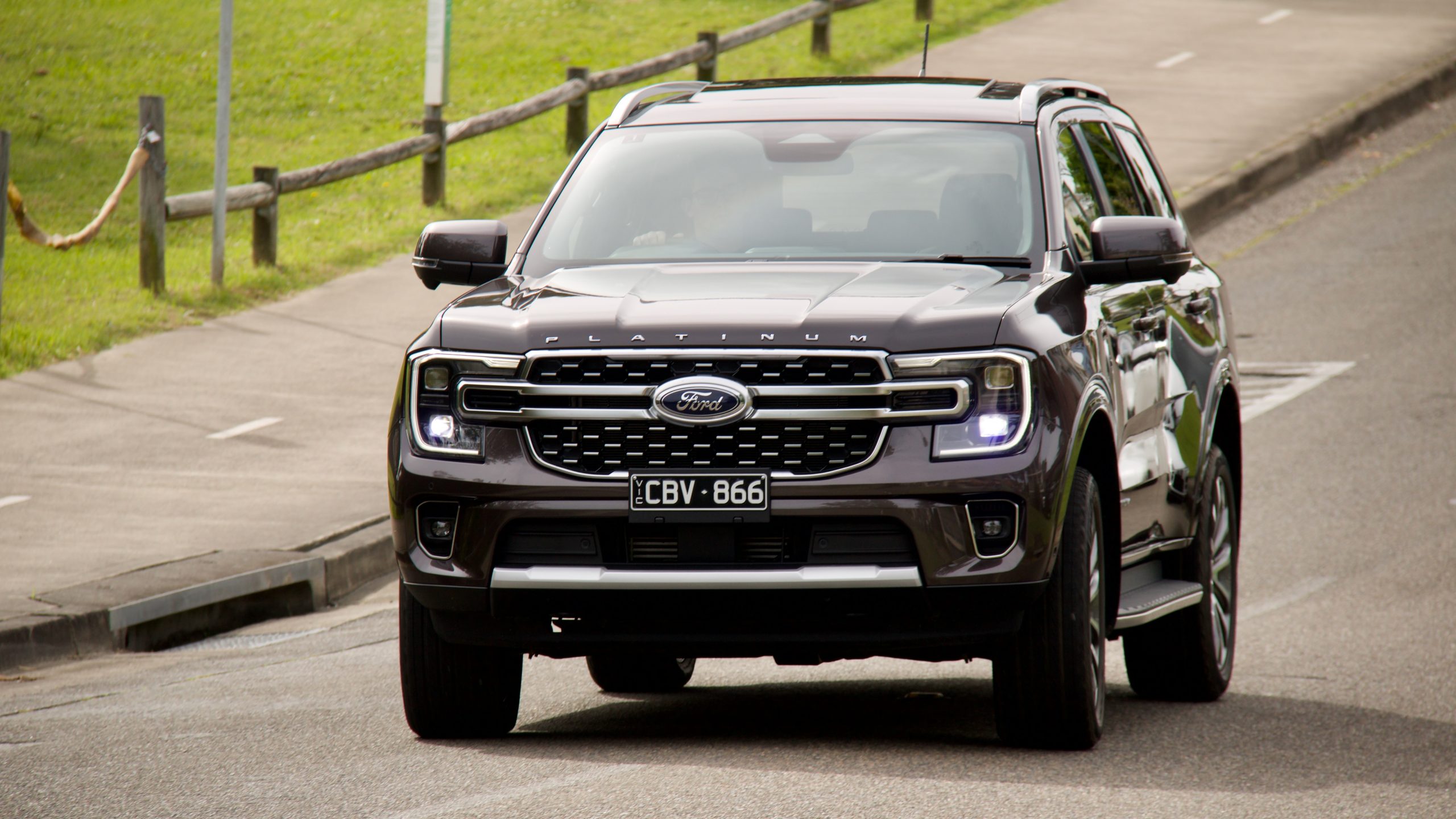
Those in the know are aware that the Everest is – without getting too specific – basically a Ranger based SUV, while the last generation always lived in the Ranger’s shadow, does the latest model have what it takes to give Ford a further boost in the sales charts? Read on to find out our thoughts.
Price & Equipment: 8.0/10
While the entry-level Ford Everest Ambiente RWD starts at $52,990 plus on-road costs, we tested the opposite end of the lineup: the 2022 Ford Everest Platinum, which is priced at $77,690 +ORC (around $85,000 drive away).
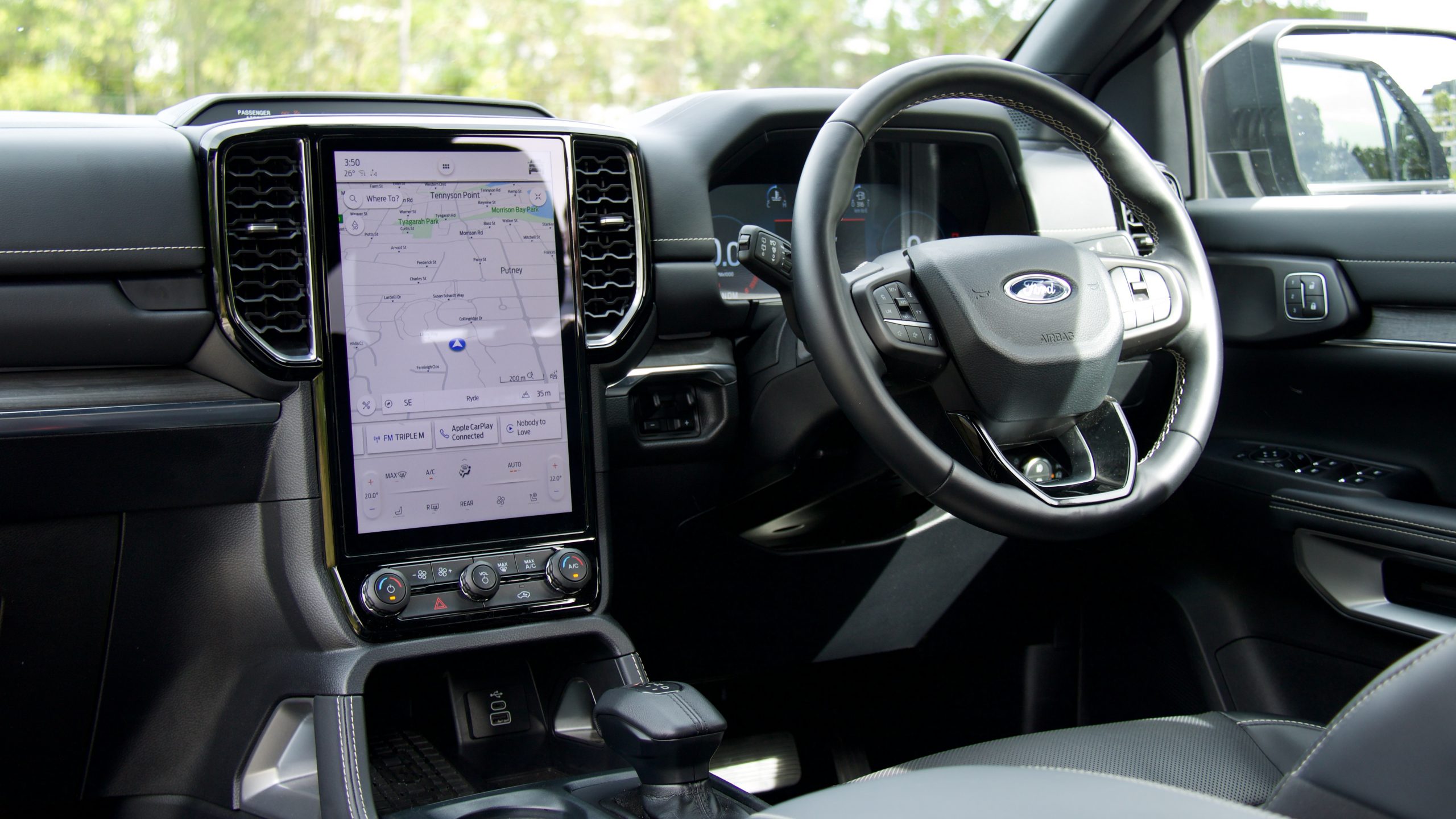
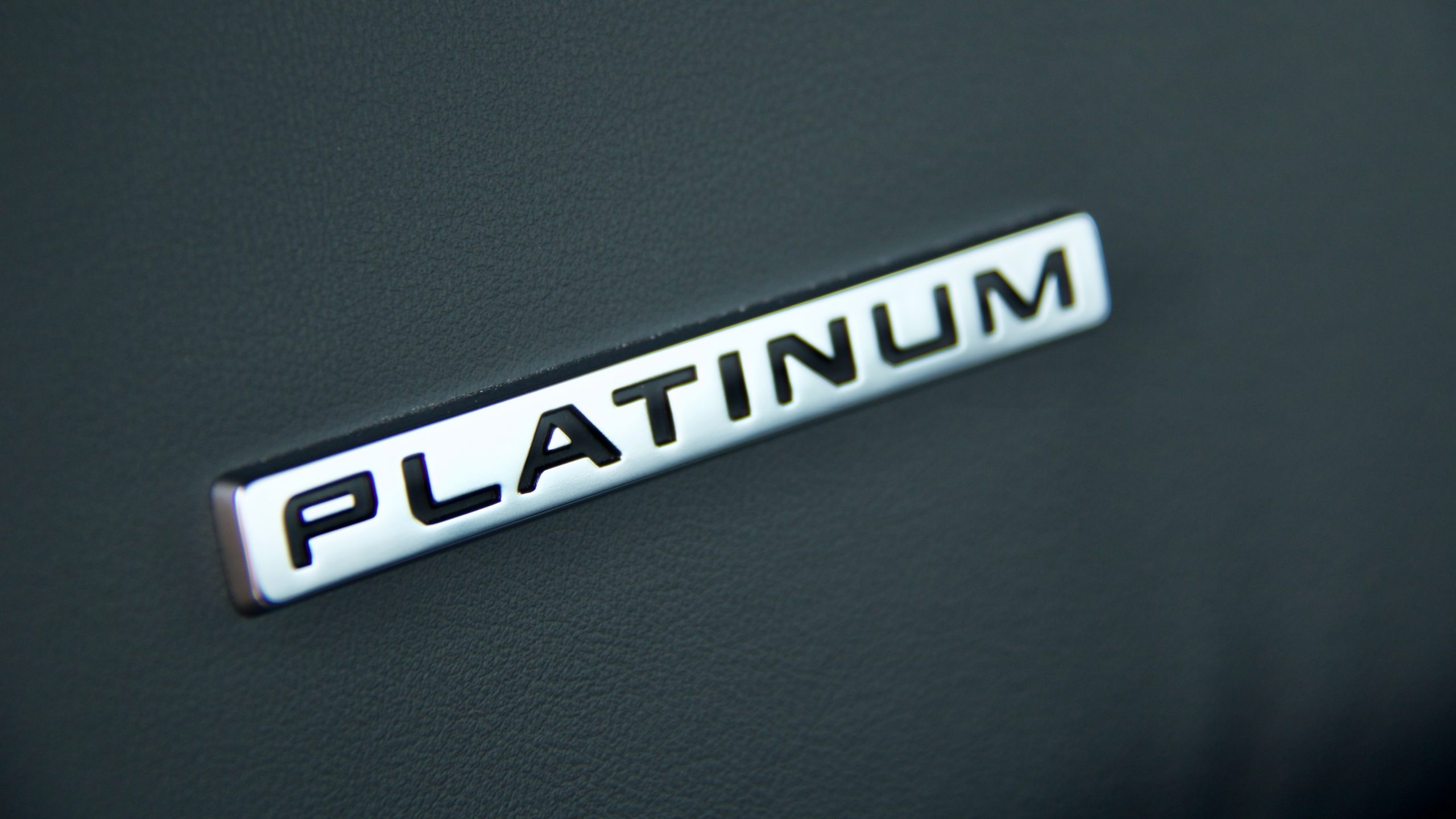
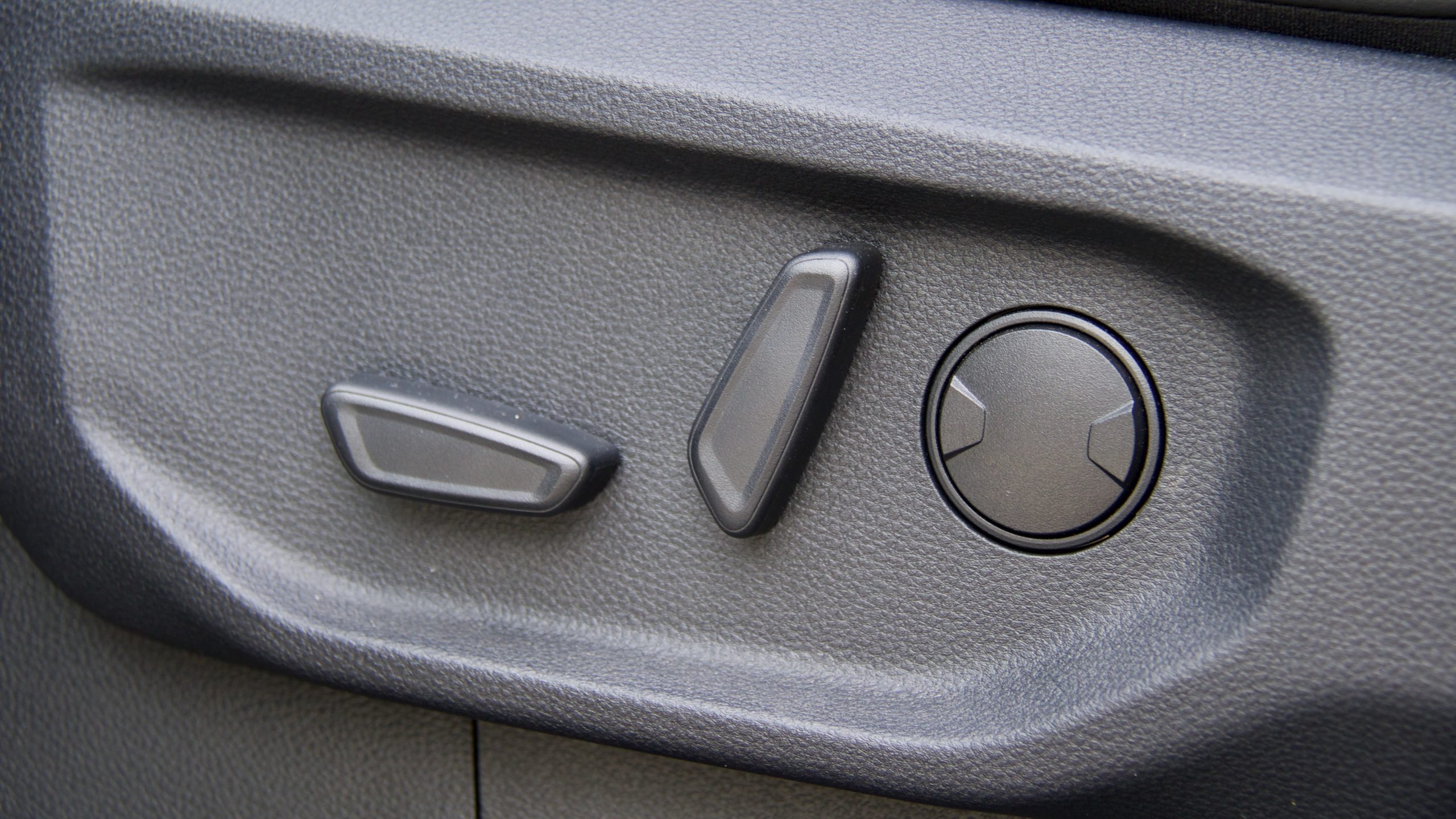
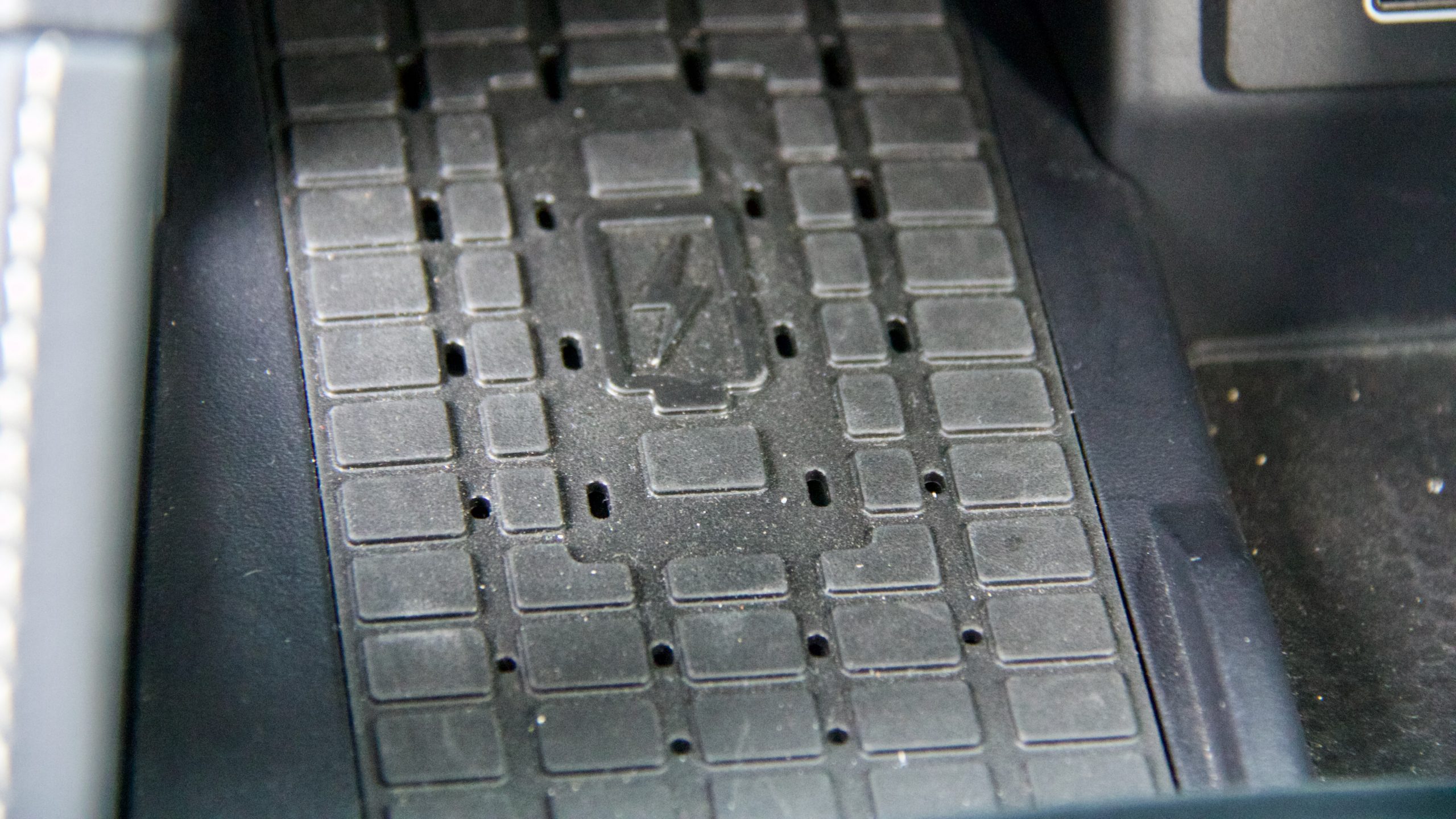
While that’s a lot of money, the 2023 Ford Everest Platinum is absolutely loaded with standard equipment. Kit includes 21-inch wheels, automatic LED lighting, auto wipers, keyless entry and start, heated and auto-folding mirrors with puddle lamps, a panoramic sunroof, leather upholstery with heated and ventilated front seats, 10-way electrically adjustable front seats with driver’s memory functionality, a 12.0-inch portrait touchscreen with wireless Apple CarPlay and Android Auto, satellite navigation with live traffic, digital radio, a 12-speaker Bang and Olufsen sound system, dual-zone climate control with rear fan speed control, heated outboard rear seats, a wireless phone charger, the FordPass smartphone app which can access the car’s location amongst other features and electric-folding third row seats.
Safety equipment includes nine airbags, auto emergency braking (AEB) with pedestrian, cyclist and intersection assistance, adaptive cruise control with stop and go functionality, lane keep assist with lane keep assist and lane trace assist, Matrix headlights with adaptive high beam functionality, blind-spot monitoring, front and rear cross-traffic alert, driver attention monitoring, rear occupant alert, rear auto braking, a 360-degree parking camera, front and rear parking sensors and auto parking.
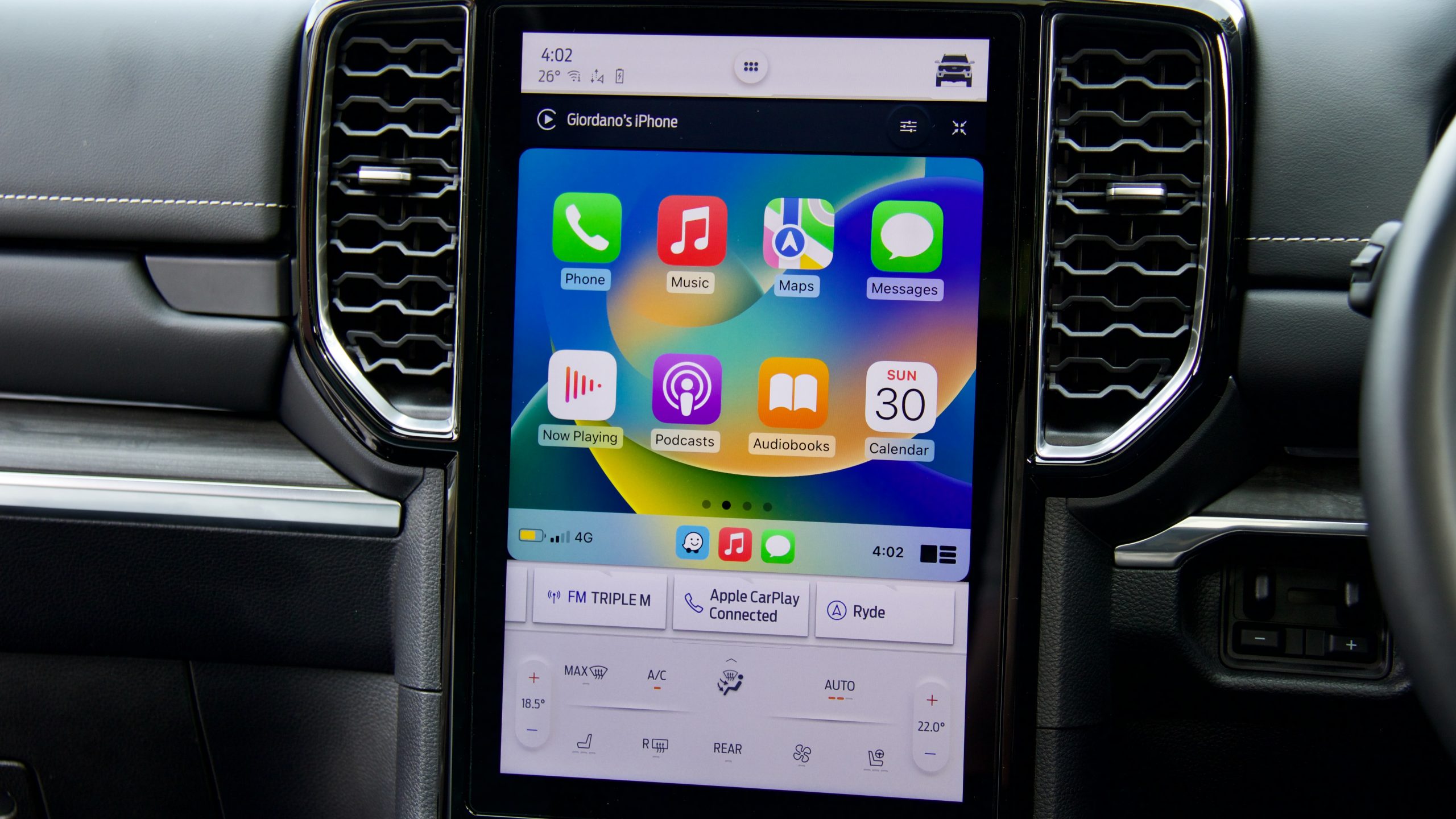
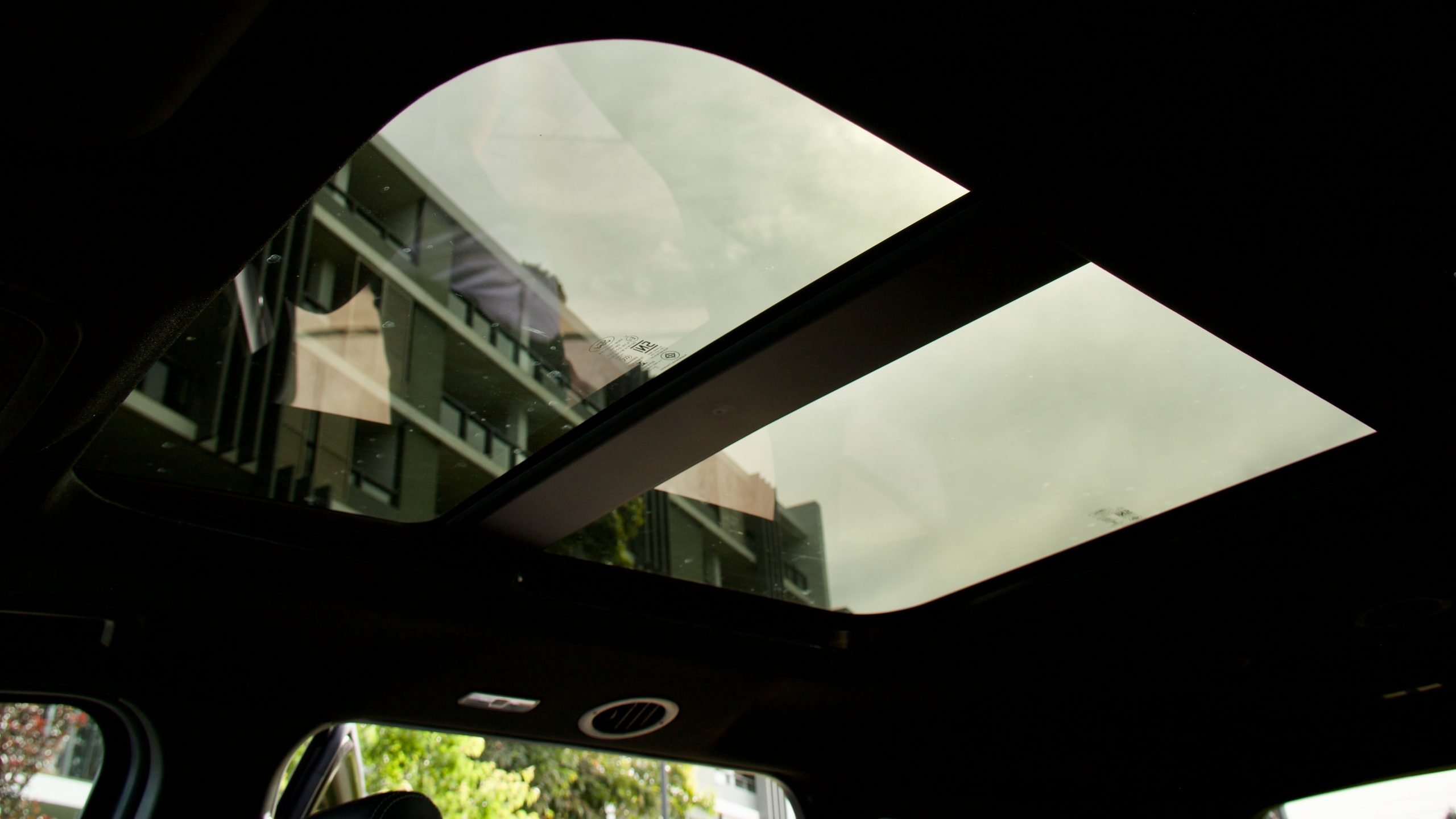
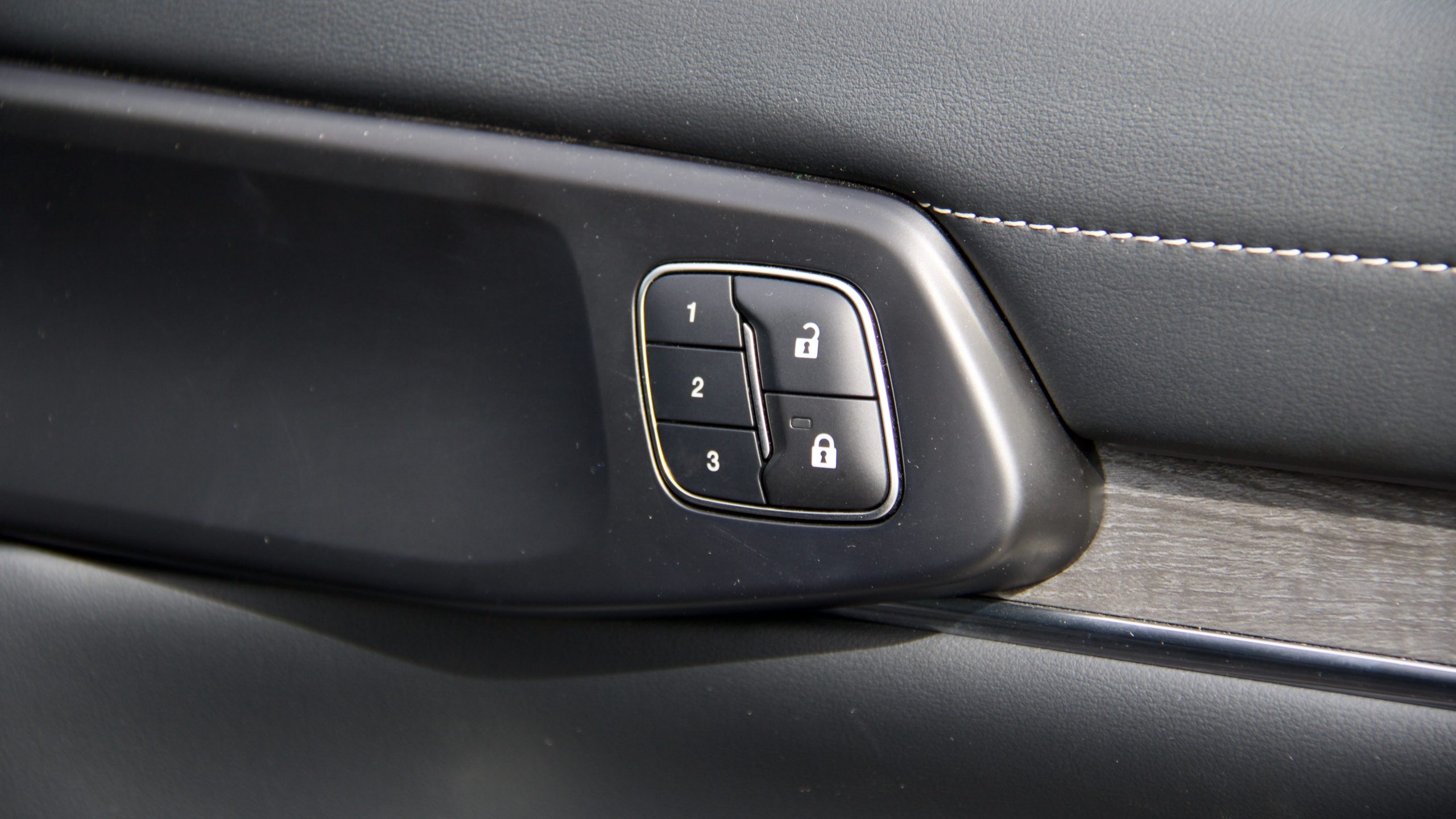
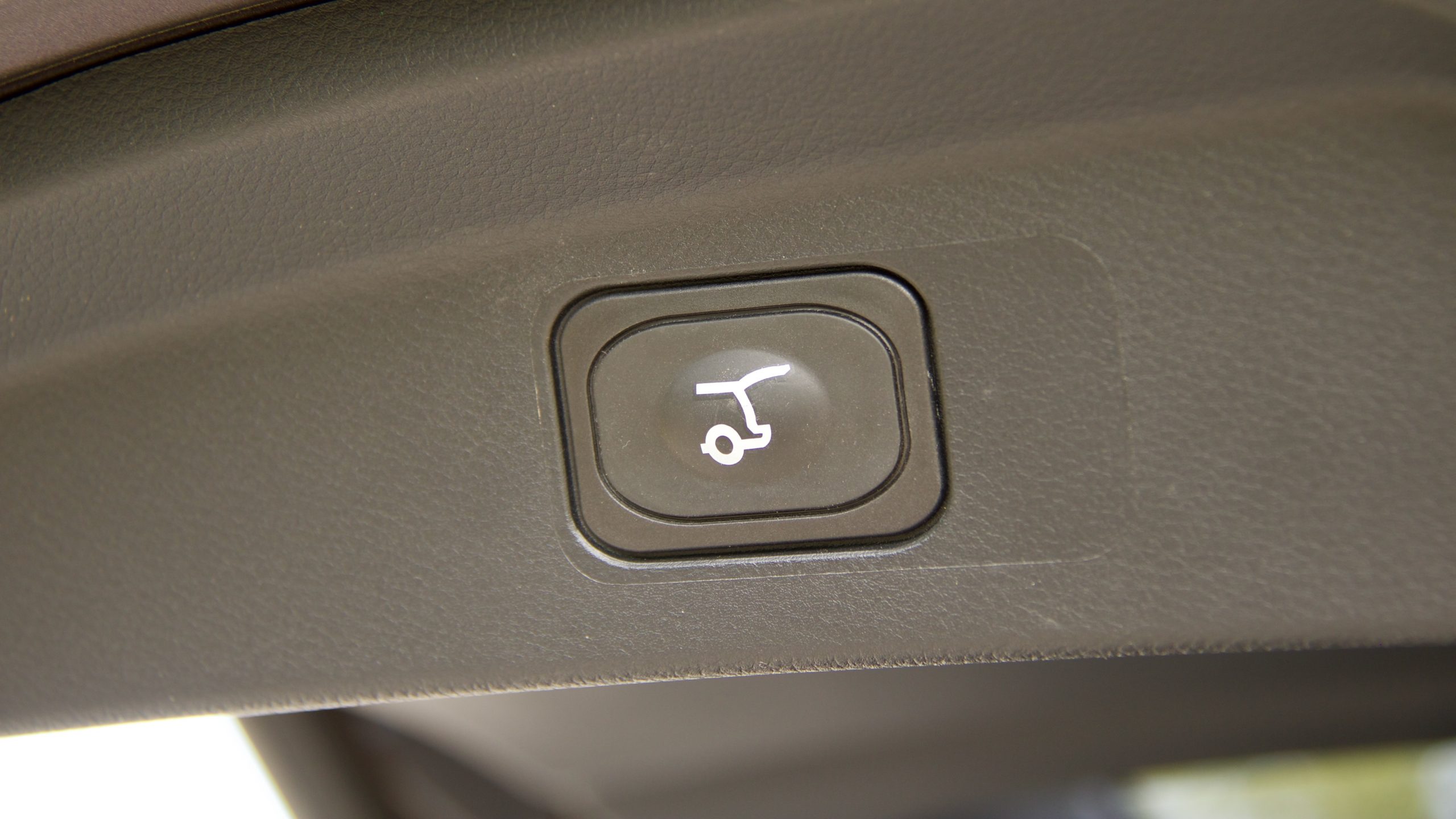
There are a handful of options available for the Everest Platinum: a no-cost 18-inch wheel with all-terrain tyre package (which also includes steel underbody protection), as well as a $1,700 Tow Pack with a tow bar and integrated trailer brake controller. Colour options include the no-cost ‘Arctic White’, and the $700-extra ‘Meteor Grey’, ‘Aluminium Silver’, ‘Sedona Orange’, ‘Shadow Black’ and our test car’s ‘Equinox Bronze’. Black is the sole interior colour option.
We don’t think the Everest Platinum is missing much kit, though we’d like to see a few features like a heads-up display, paddle shifters, more rear USB ports and a separate rear climate zone added.
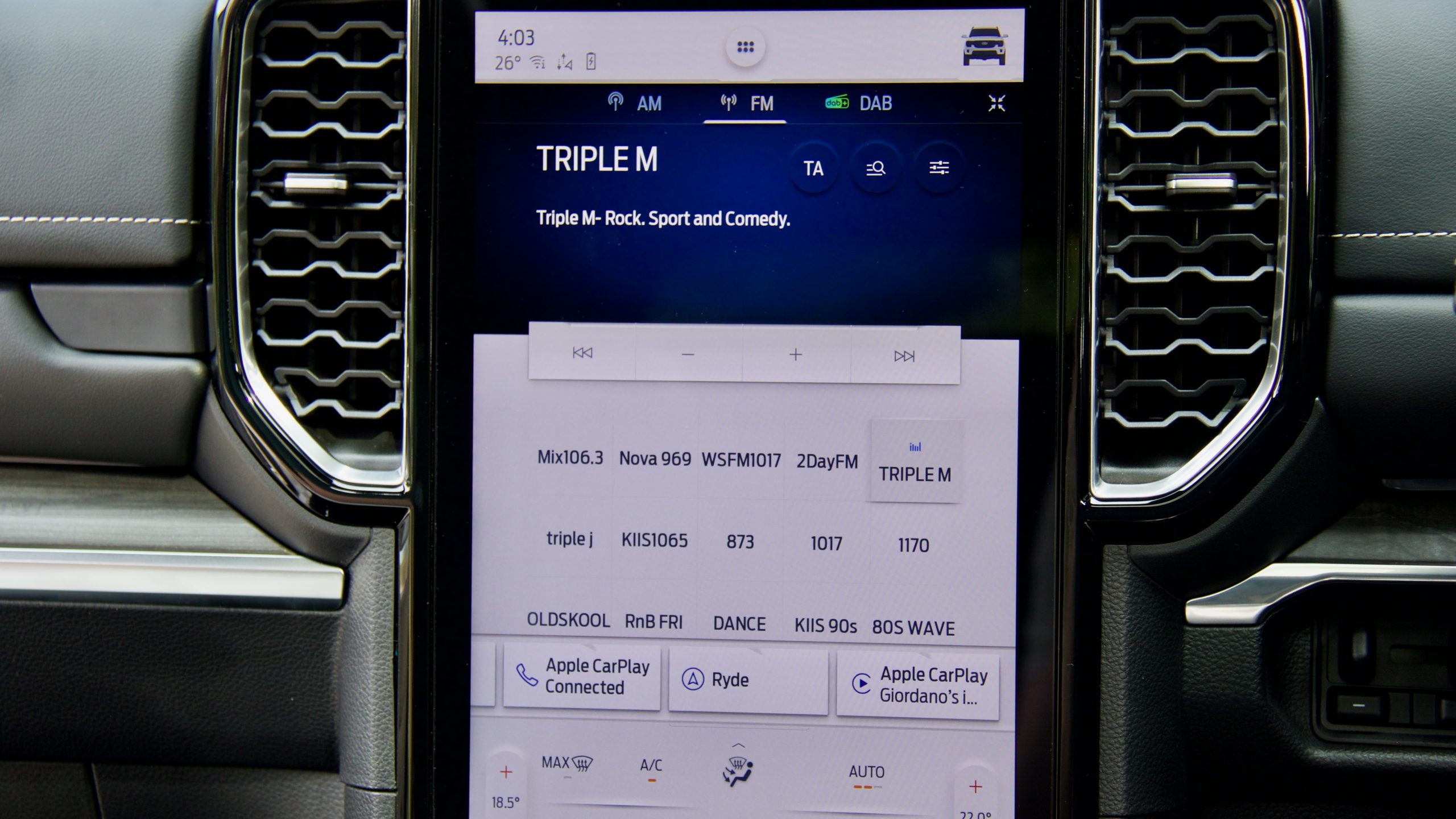
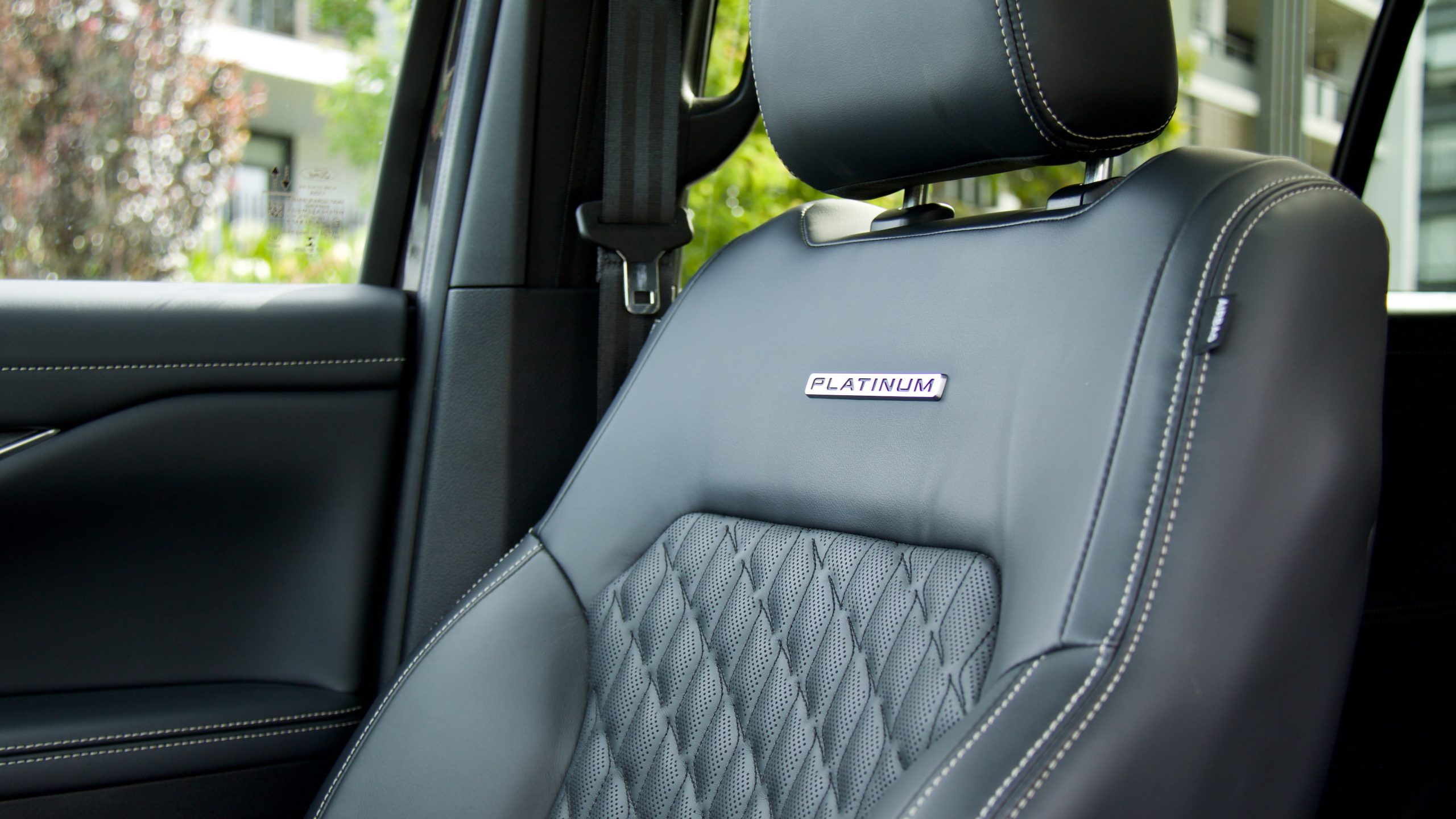
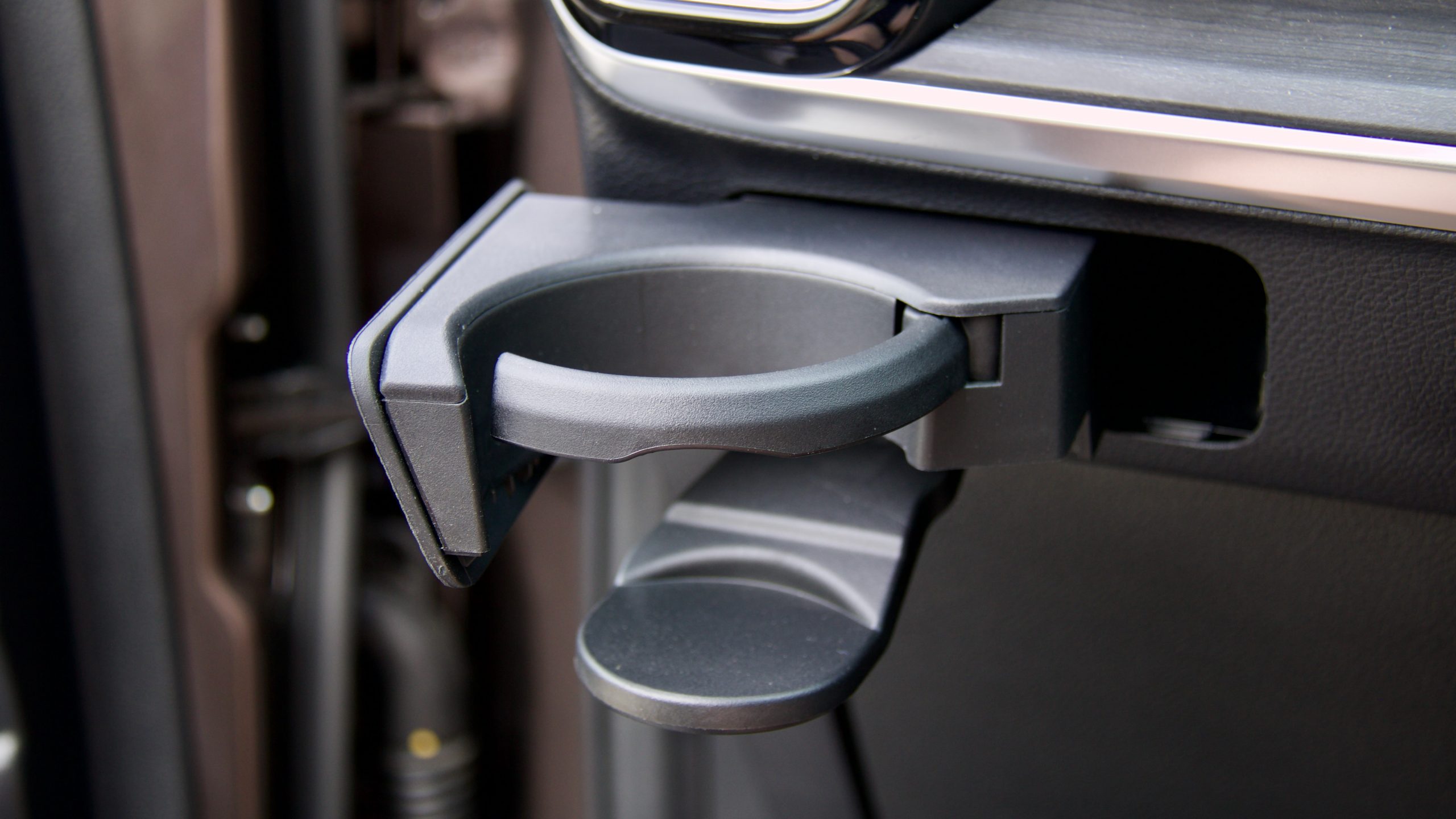
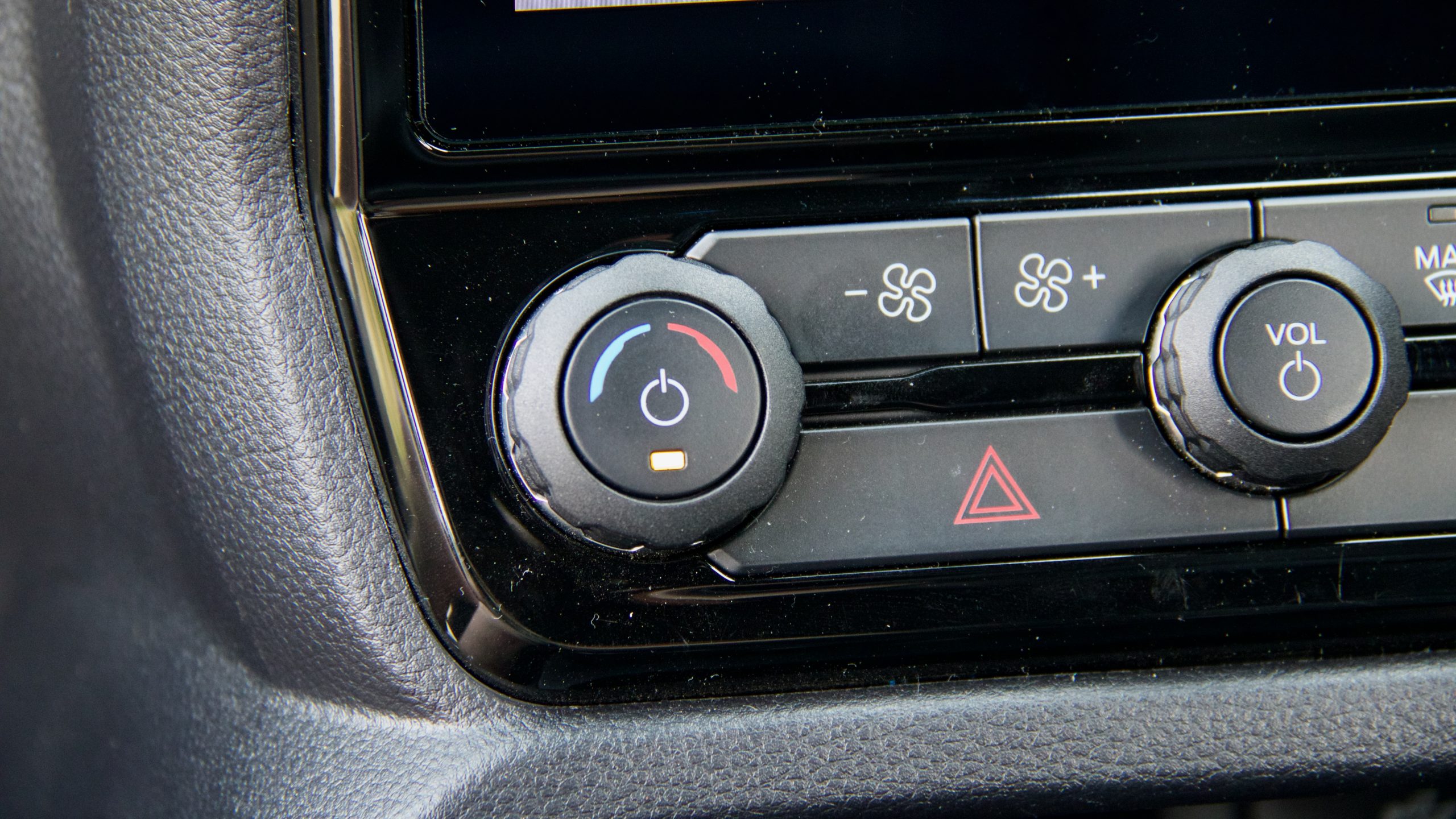
There is a lot of competition to the Everest range, including the rest of the ute-based SUVs like the Mitsubishi Pajero Sport and Isuzu MU-X, the Toyota Prado and LandCruiser 300 Series, as well more expensive metal like the Land Rover Discovery and Land Rover Defender. While the Everest has a lot more kit than a top-spec Pajero Sport ($64,490 drive away) and MU-X ($65,990 drive away), it also costs a lot more – an Everest Trend or Ambiente is much more comparable on price.
In both size and price, the Toyota Prado Kakadu is the best competitor to the Everest – at around $94,000 drive away, it’s also around $9,000 more expensive than the Everest. What does the Prado add over the Everest? An extra zone of climate control, a rear DVD screen and adaptive suspension – but the Everest has more safety equipment, far more technology and a far gruntier engine, making it much better value for money.
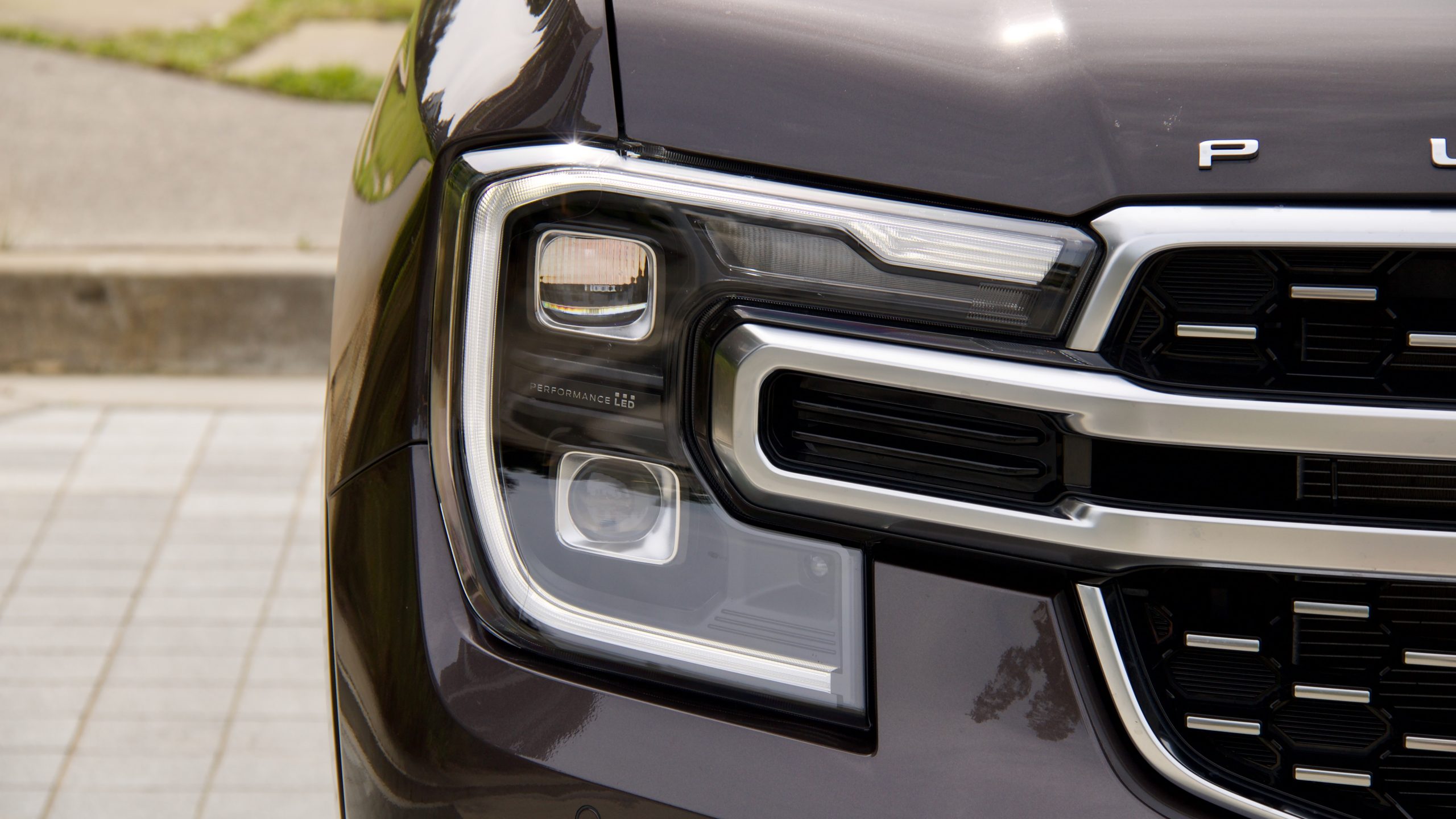
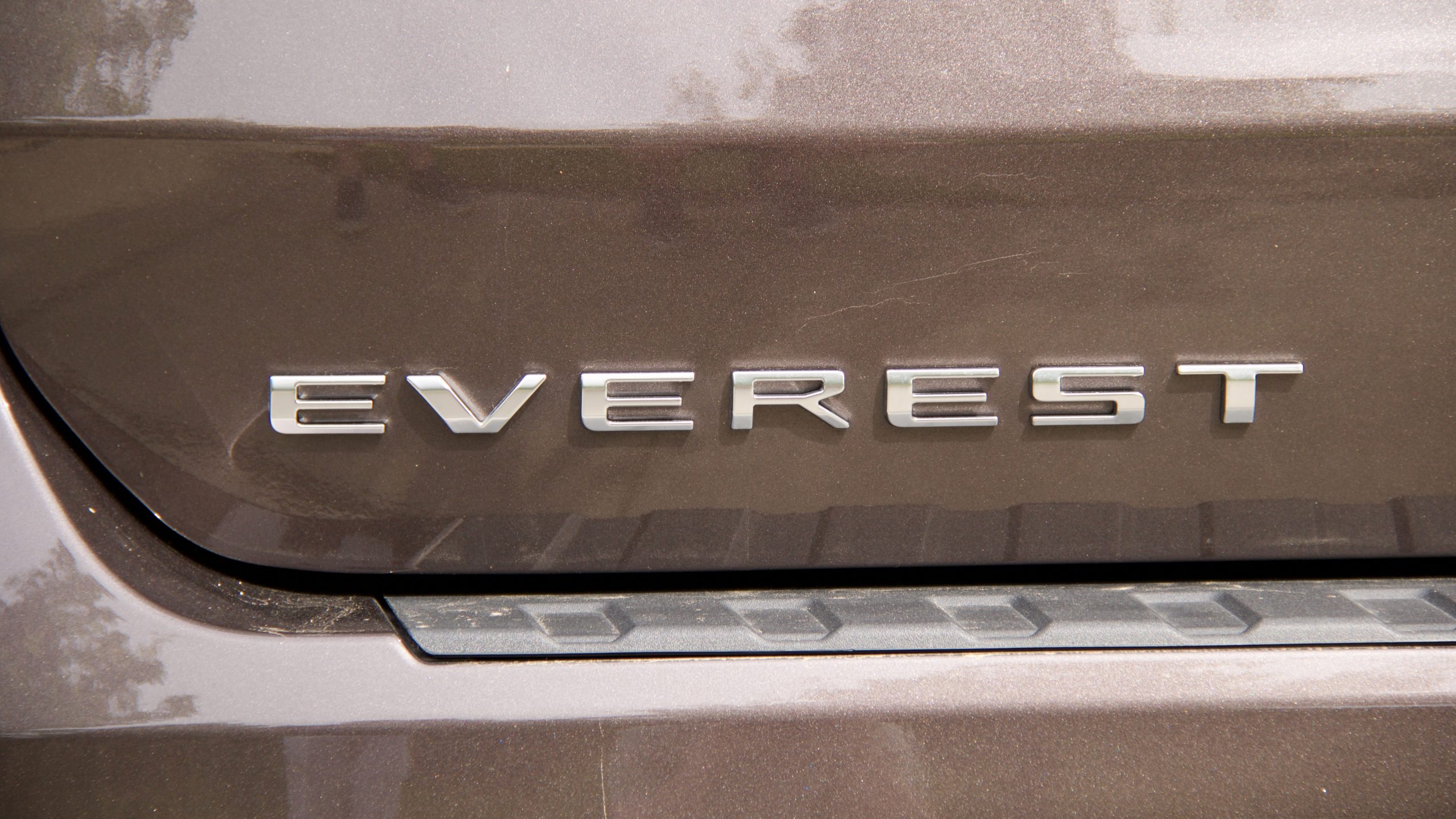
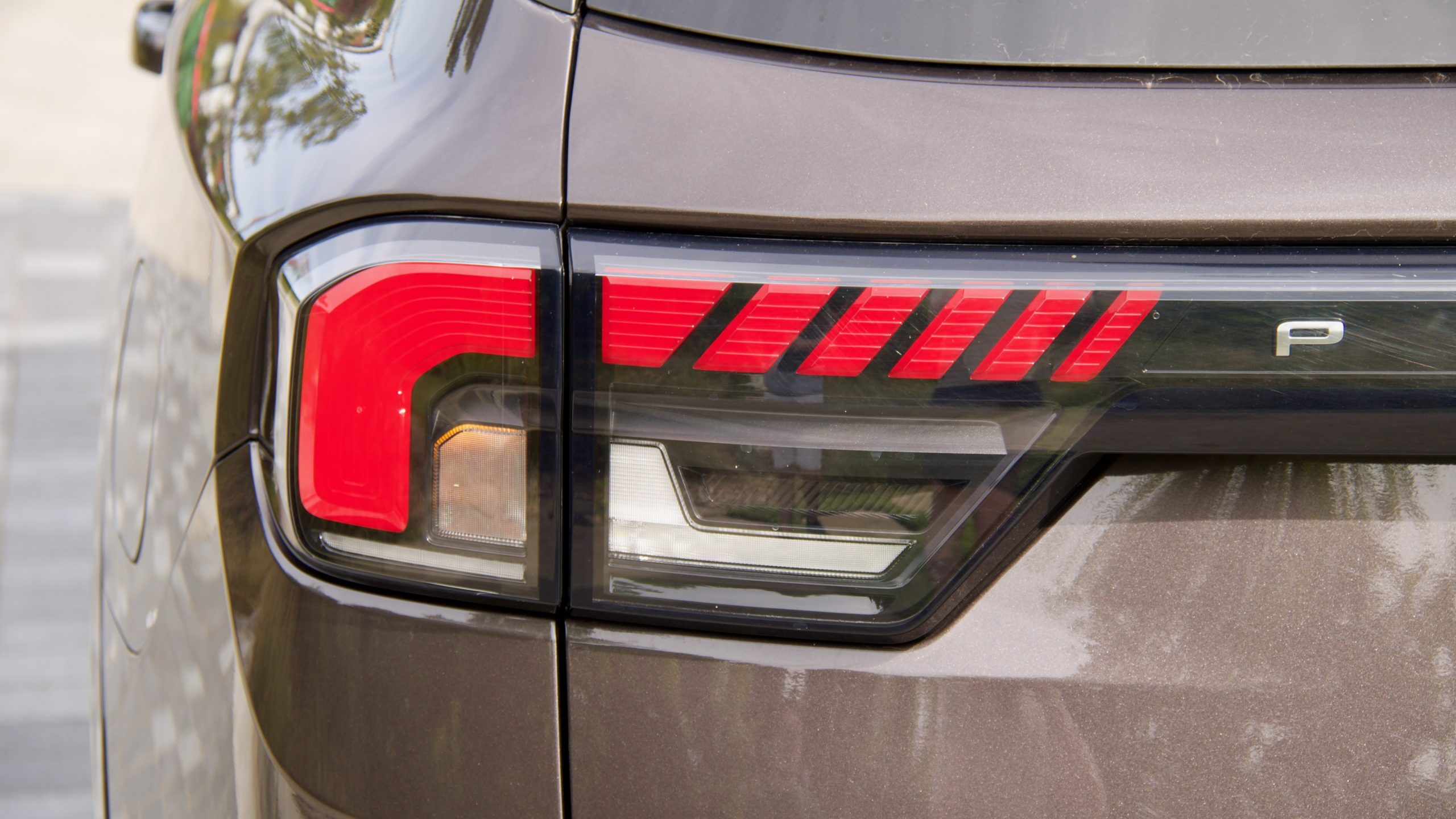
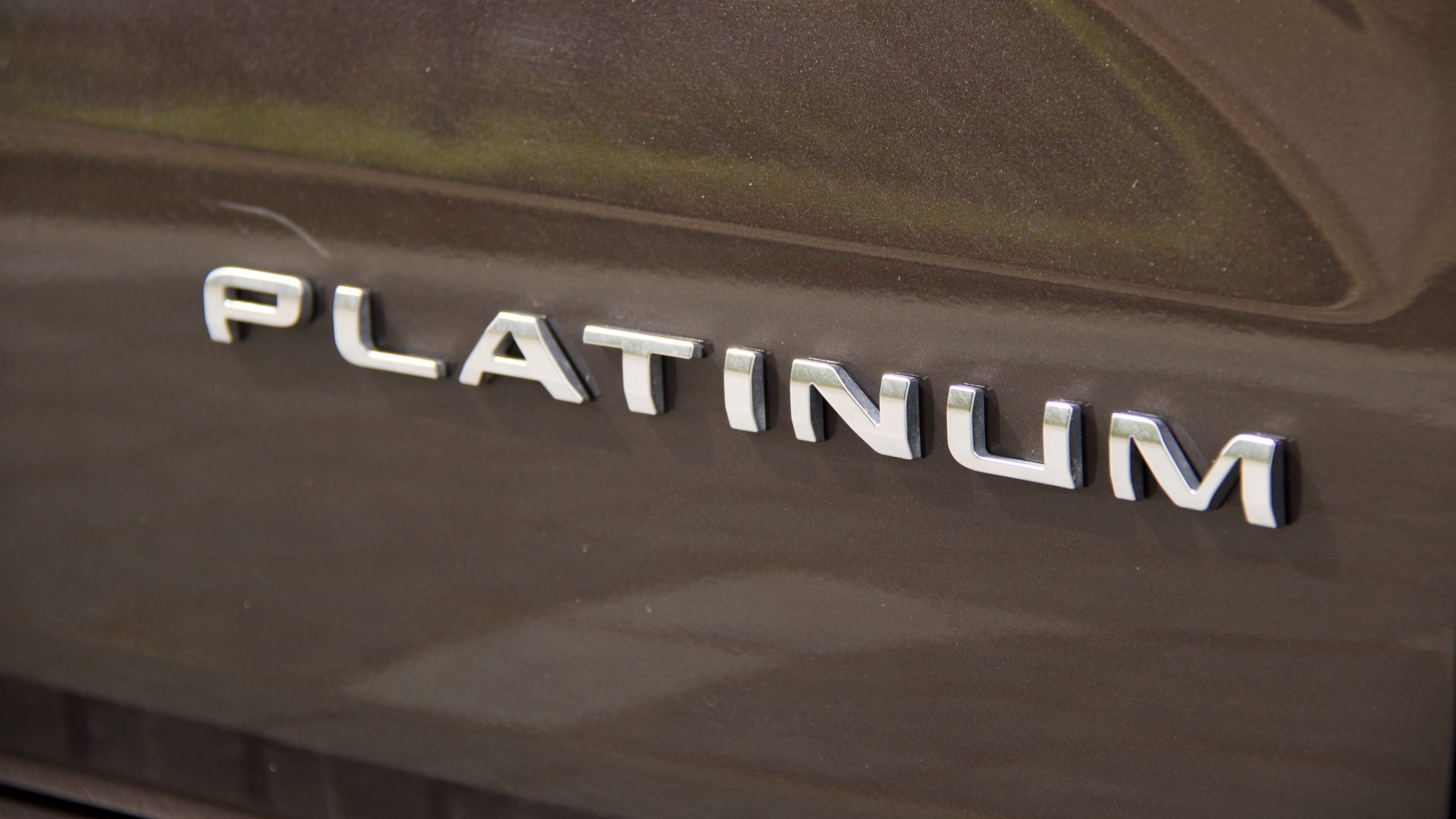
Adding further the to Everest’s value is that to get an equivalent level of equipment on even the cheapest Land Rover Discovery, you’re looking at almost $135,000 drive away, which is a massive $50,000 difference. Sure, the Discovery has more power – from pretty much the same engine as the Everest – and is roomier on the inside, but you’d have to think twice about spending that much more money on one.
Performance & Economy: 9.0/10
While you can get a 157kW/500Nm 2.0-litre bi-turbo diesel engine in lesser Everest models, the sole engine choice in the Everest Platinum is the 3.0-litre V6 diesel that also features in the Ranger. It makes 184kW of power (at 3,250rpm) and 600Nm of torque (between 1,750rpm and 2,250rpm) and as with the Ranger V6, the only transmission available is a 10-speed torque converter automatic.
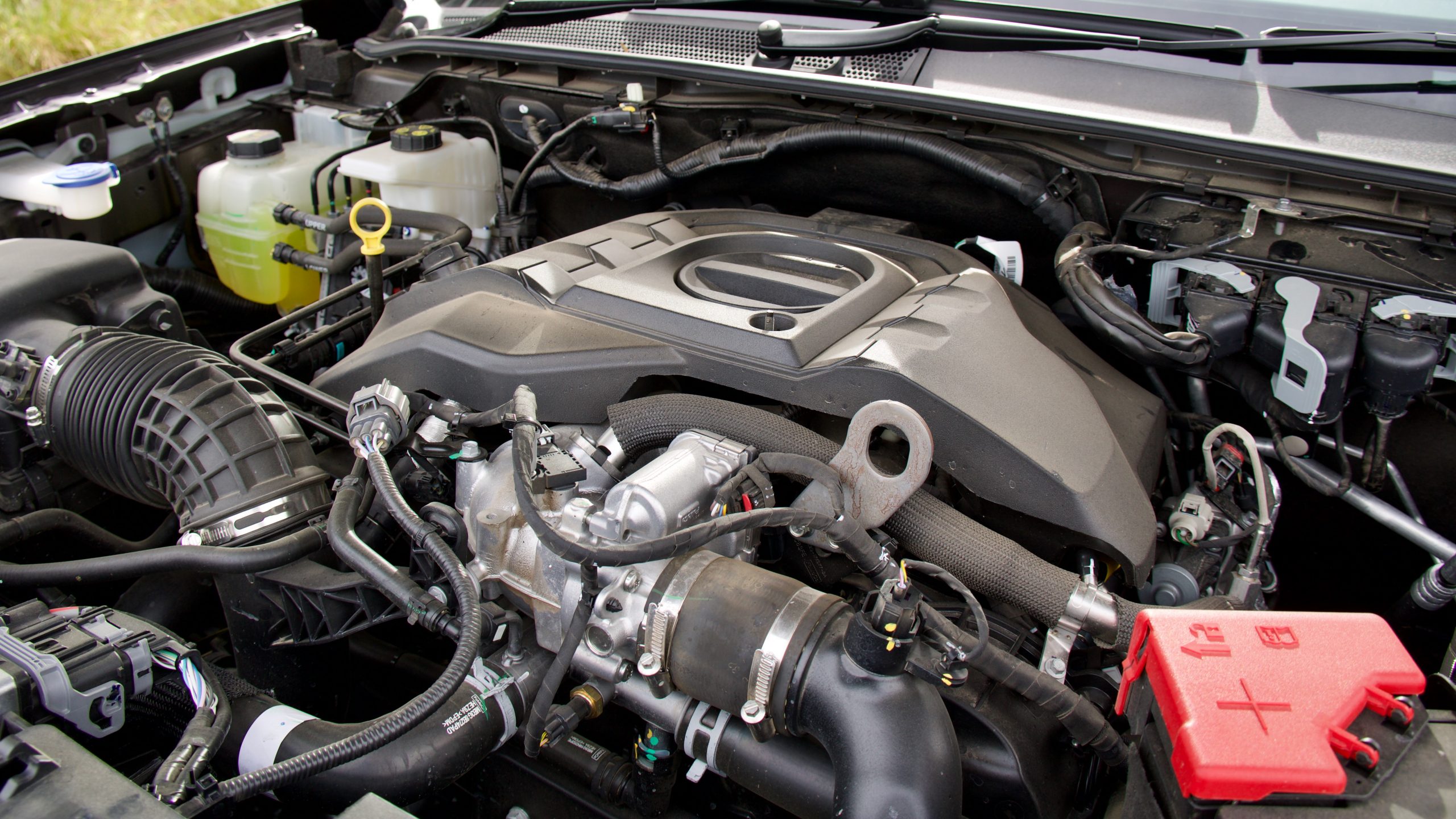
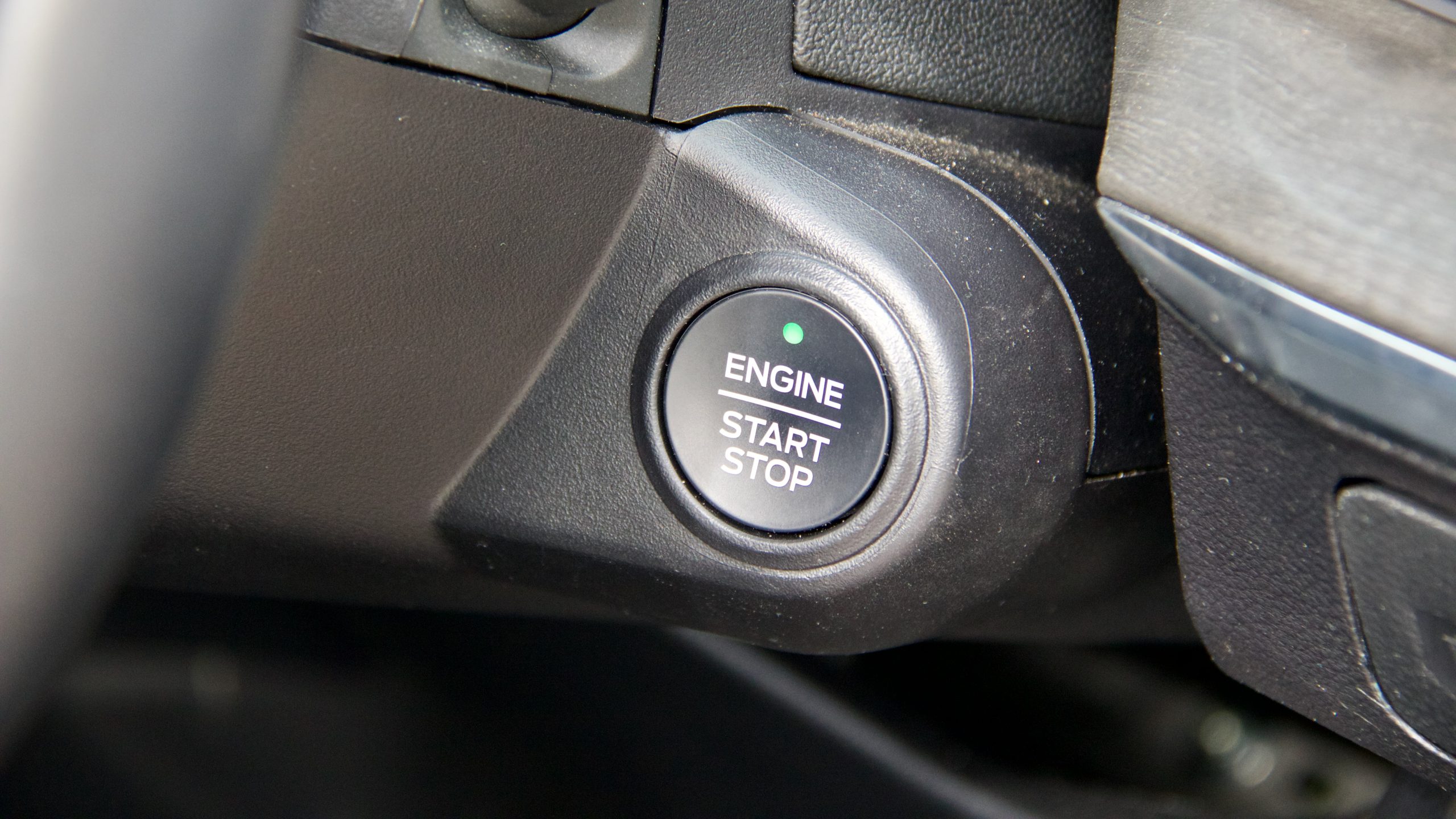
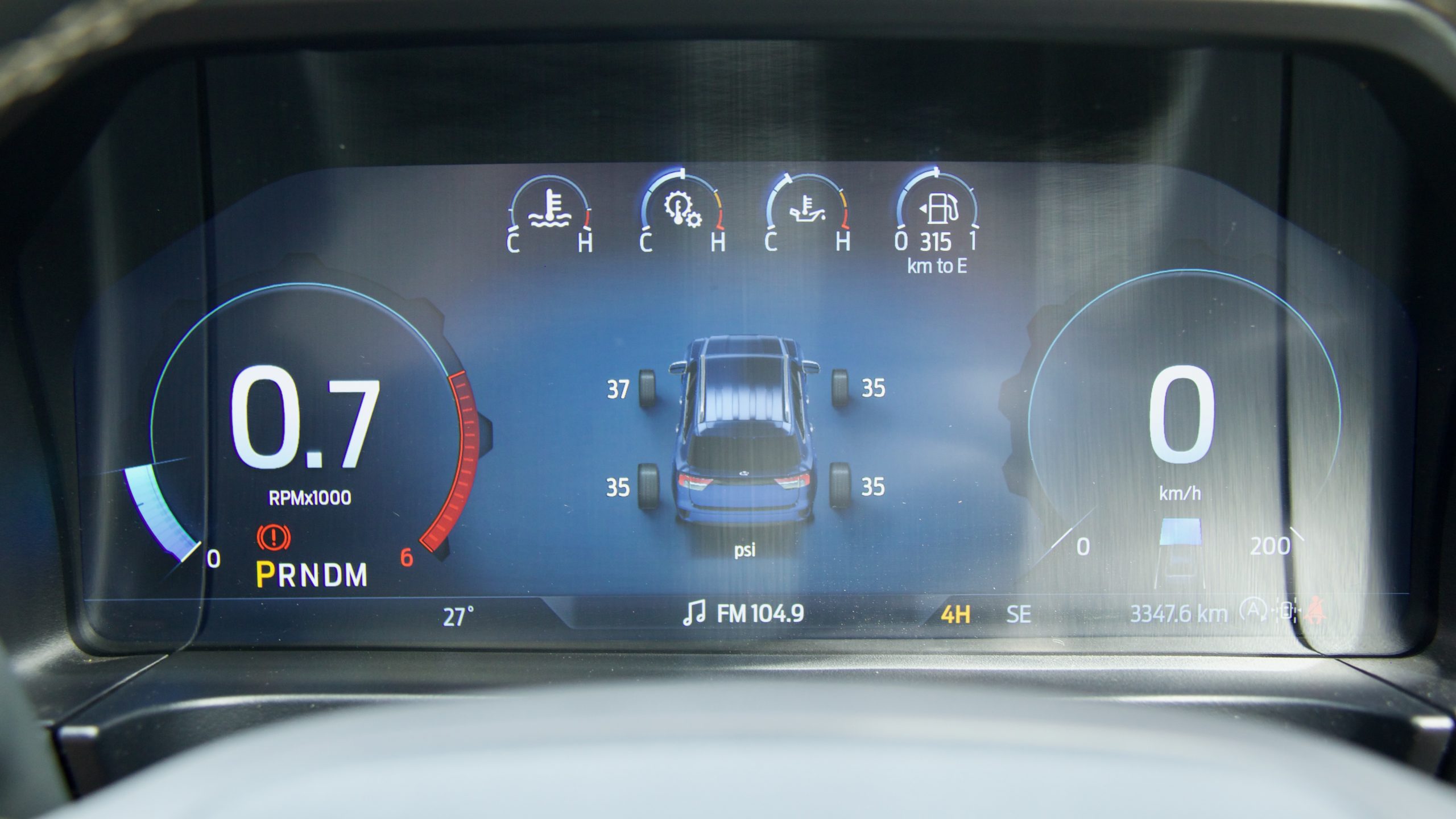
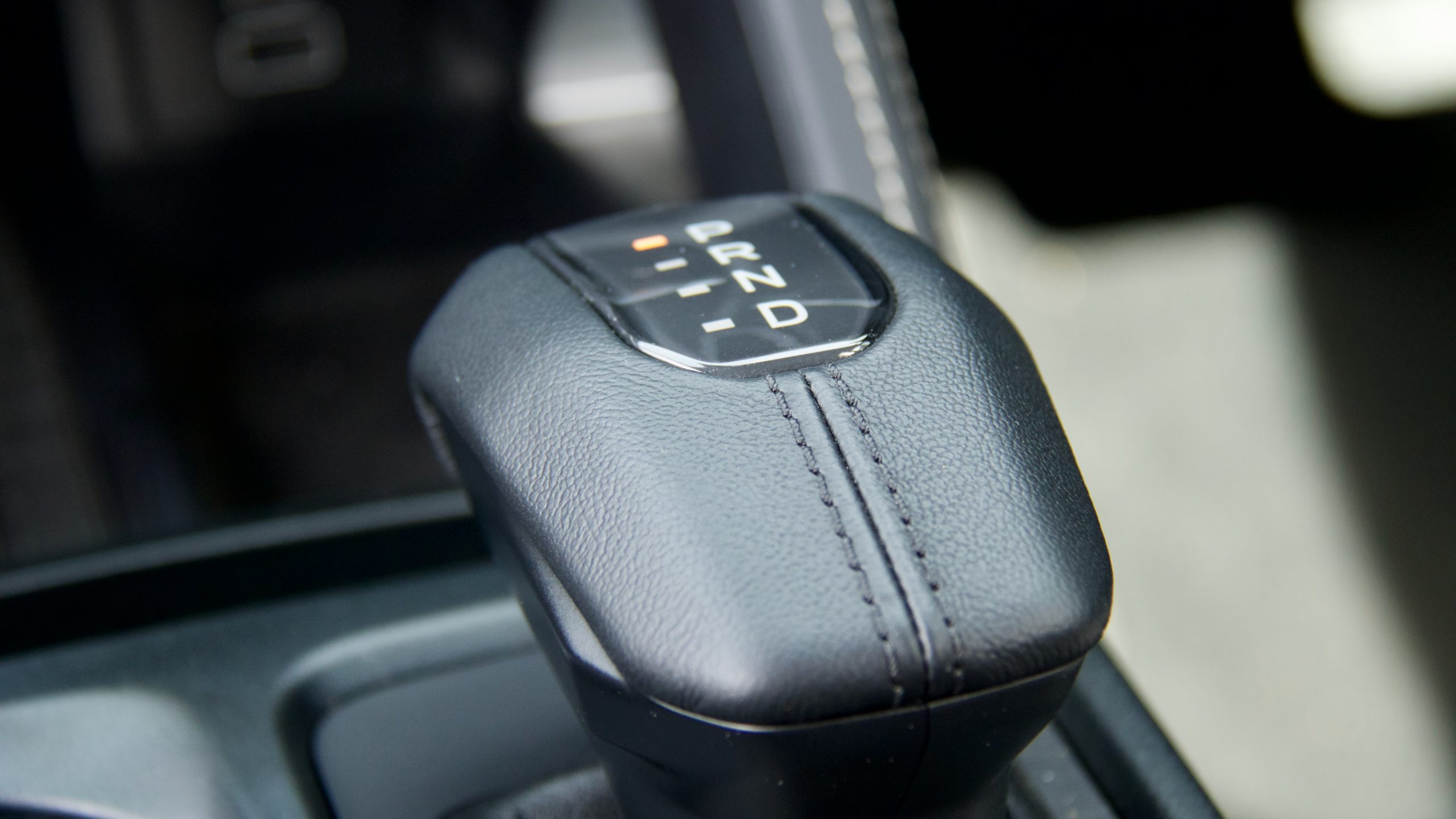
As in the Ranger, the V6 diesel is a great engine and in our opinion, should have been used in the Ranger and Everest years ago. It’s got excellent refinement, grunt throughout the rev range and good performance as well. While you can’t choose the lesser bi-turbo diesel on the Platinum, if you’re choosing between the two engines on lower Everest models, we would opt for the V6 every single time. But even the bi-turbo diesel has far superior refinement to the loud Prado.
The 10-speed automatic transmission is also pretty good. As with many other aspects of the whole car, it feels like an extension of your body with even small throttle inputs resulting in subtle downshifts for more grunt, if needed. The transmission also has a manual mode – using the button on the gear lever – if more manual control is needed, but we’d prefer paddle shifters to the fiddly buttons.
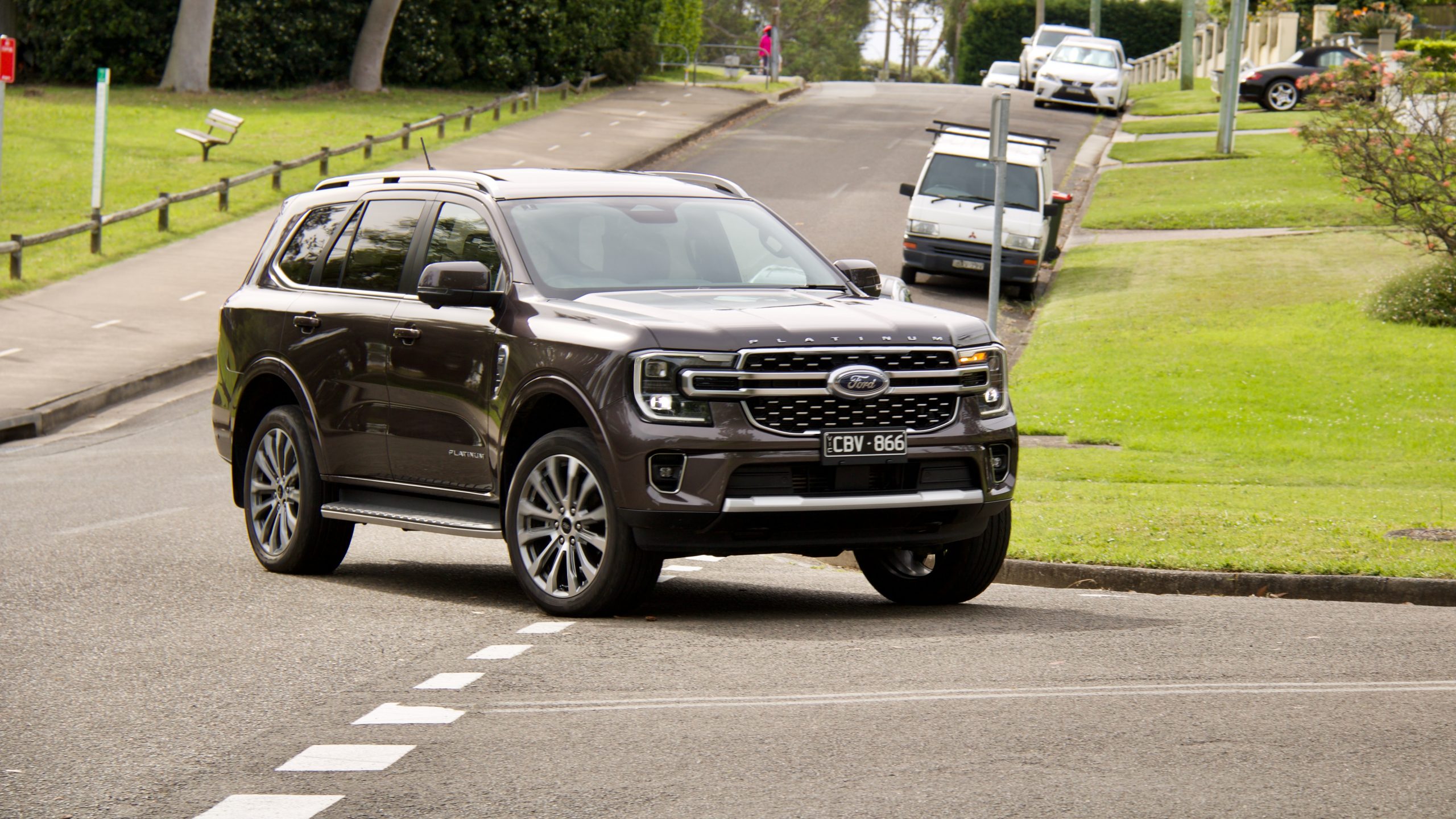
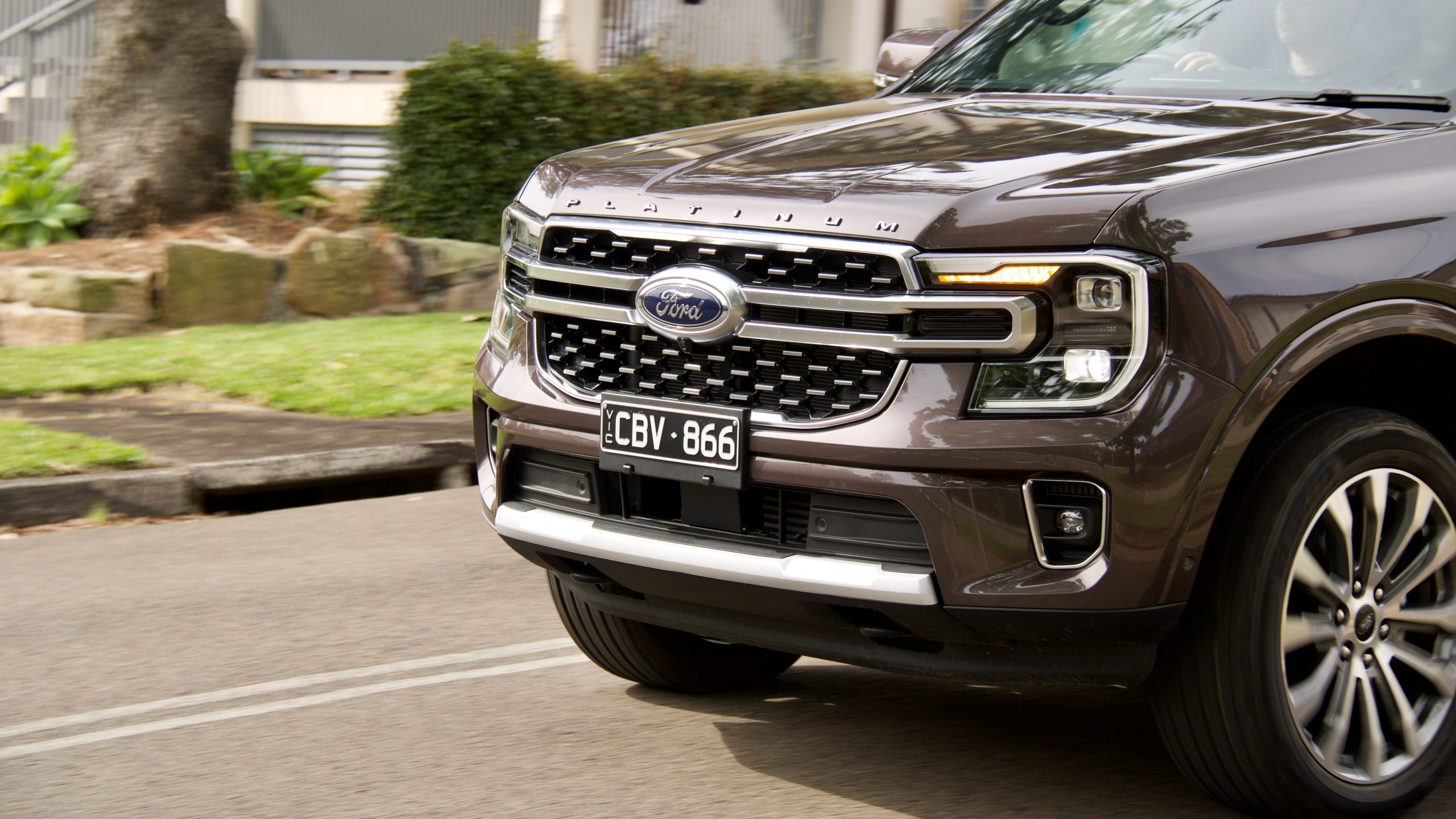
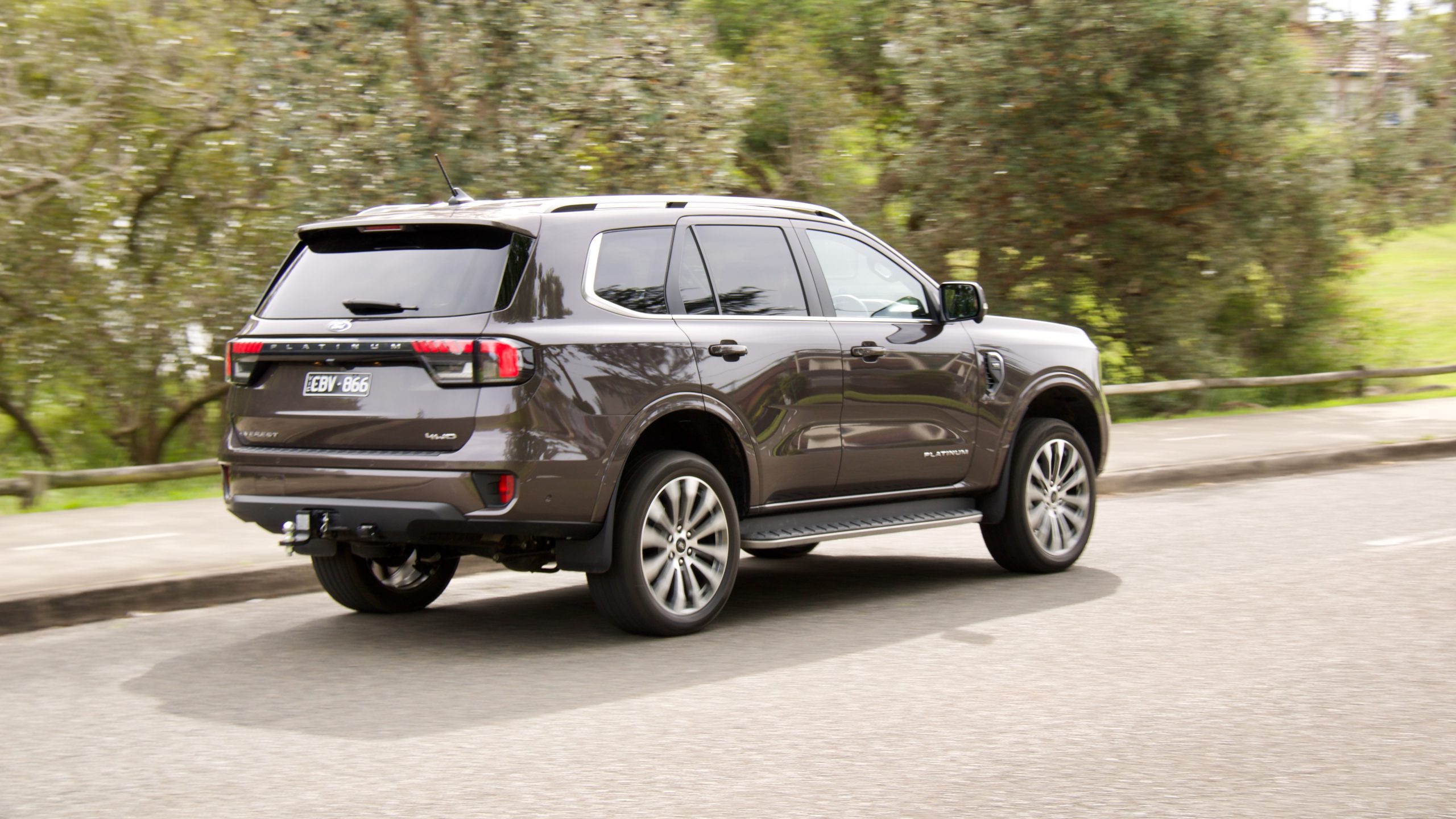
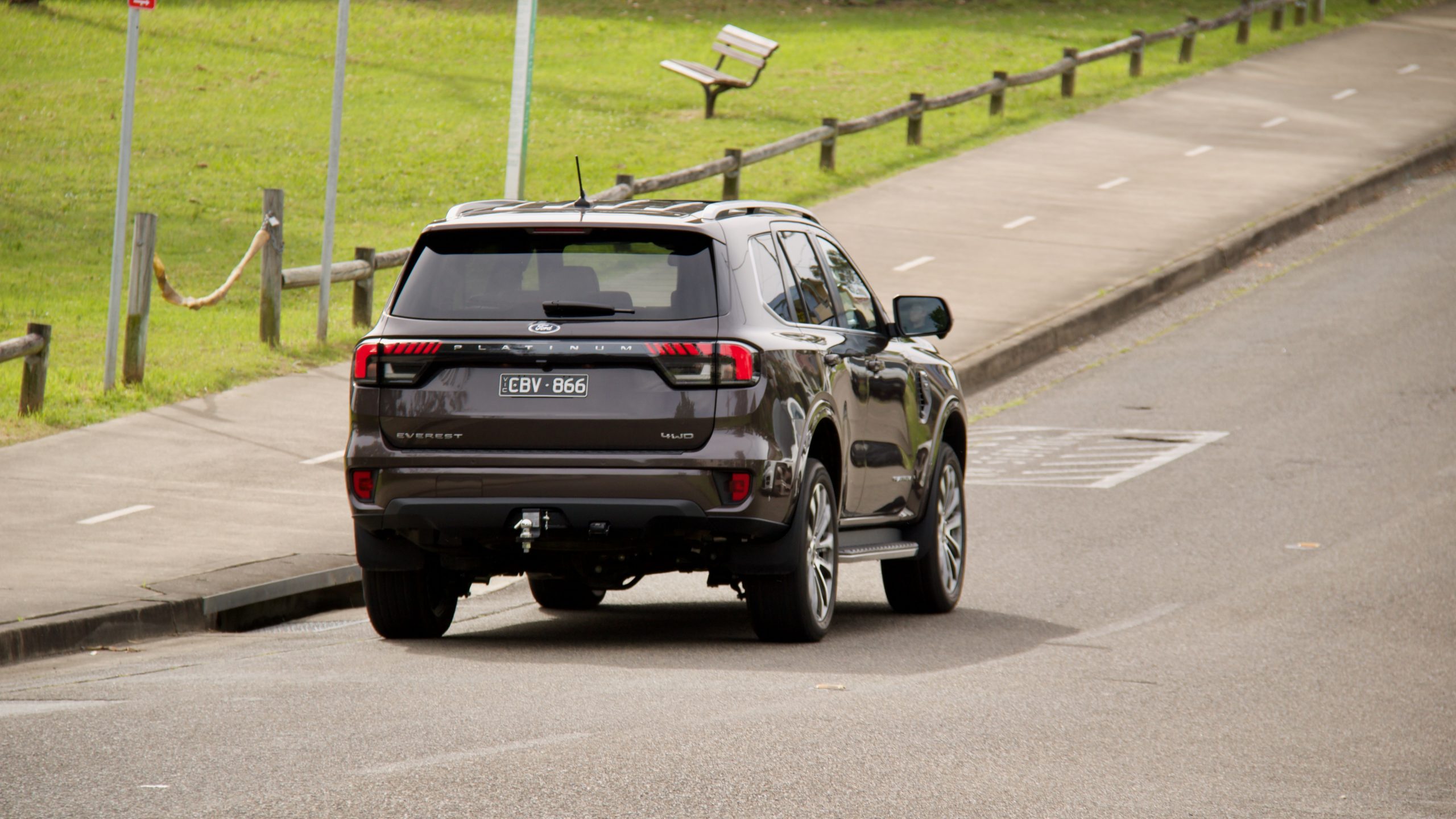
The claimed average fuel consumption rating for the Everest Platinum is 8.5L/100km with claimed C02 emissions of 224g/km, and we achieved 10.4L/100km in mostly urban driving. The Everest has an 80-litre fuel tank, which should give it a range of around 769kms based on that consumption.
Ride & Handling: 8.5/10
Based on the same ‘T6.2’ platform as the Ranger ute – and the previous-shape Everest – the 2023 Ford Everest Platinum drives well. Really well, in fact. So well that while it’s not as comfortable as something like an Audi Q7, if you drove both blind folded, you’d struggle to tell which large V6 diesel SUV you were driving. Of course, the Everest is far superior off-road compared to the Q7, but on the road this time around, it’s genuinely excellent and offers up no massive faults.
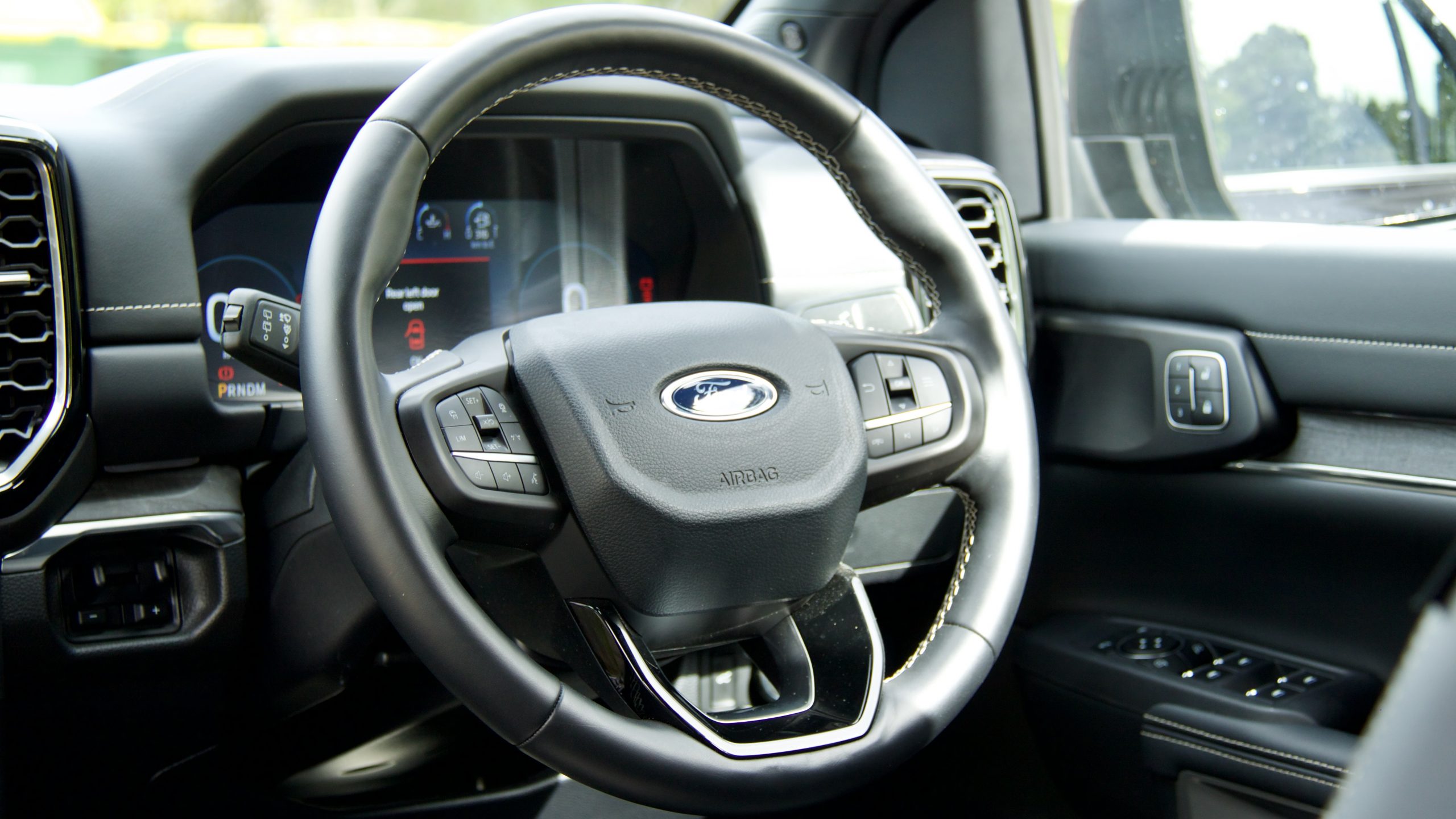
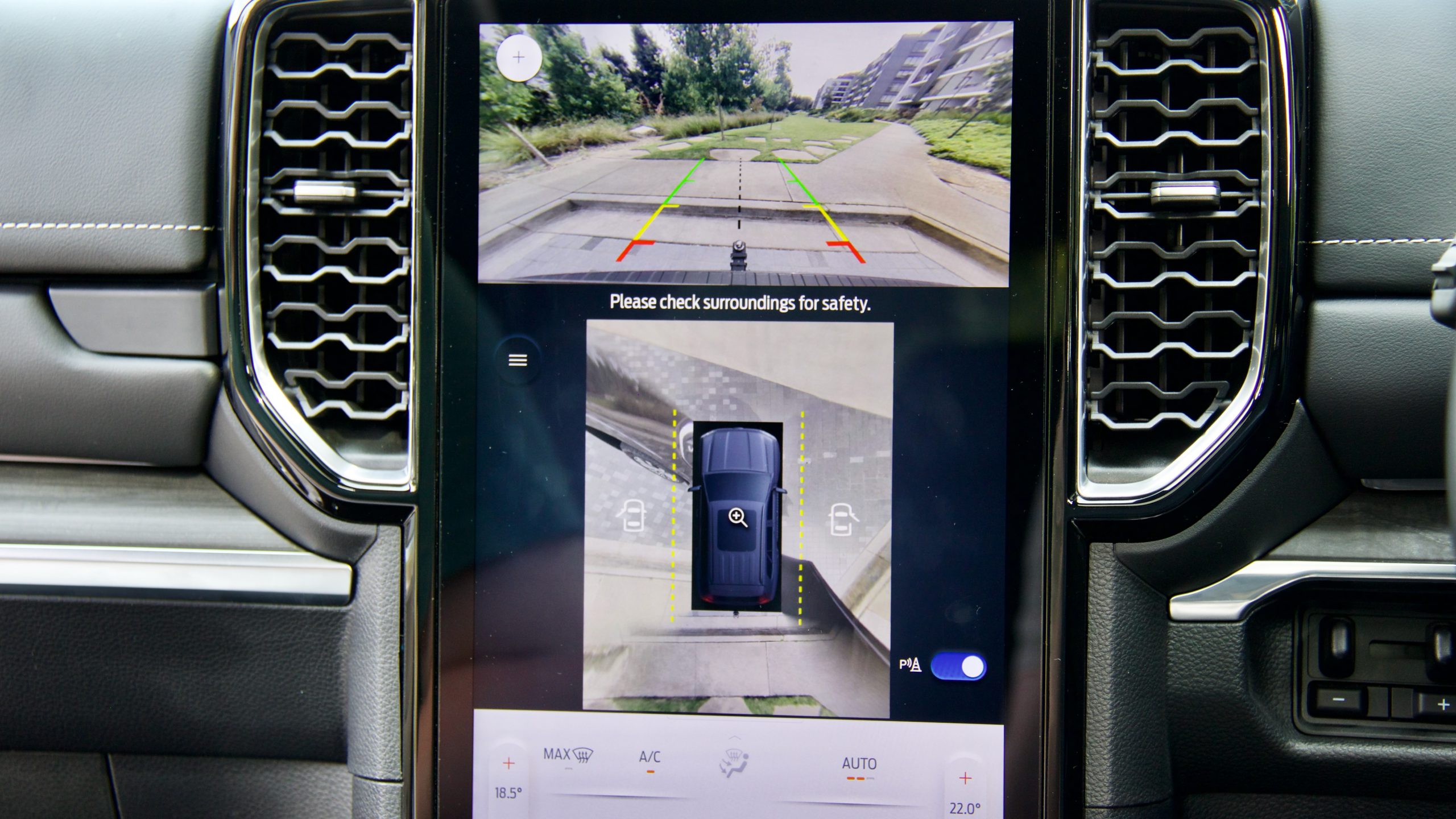
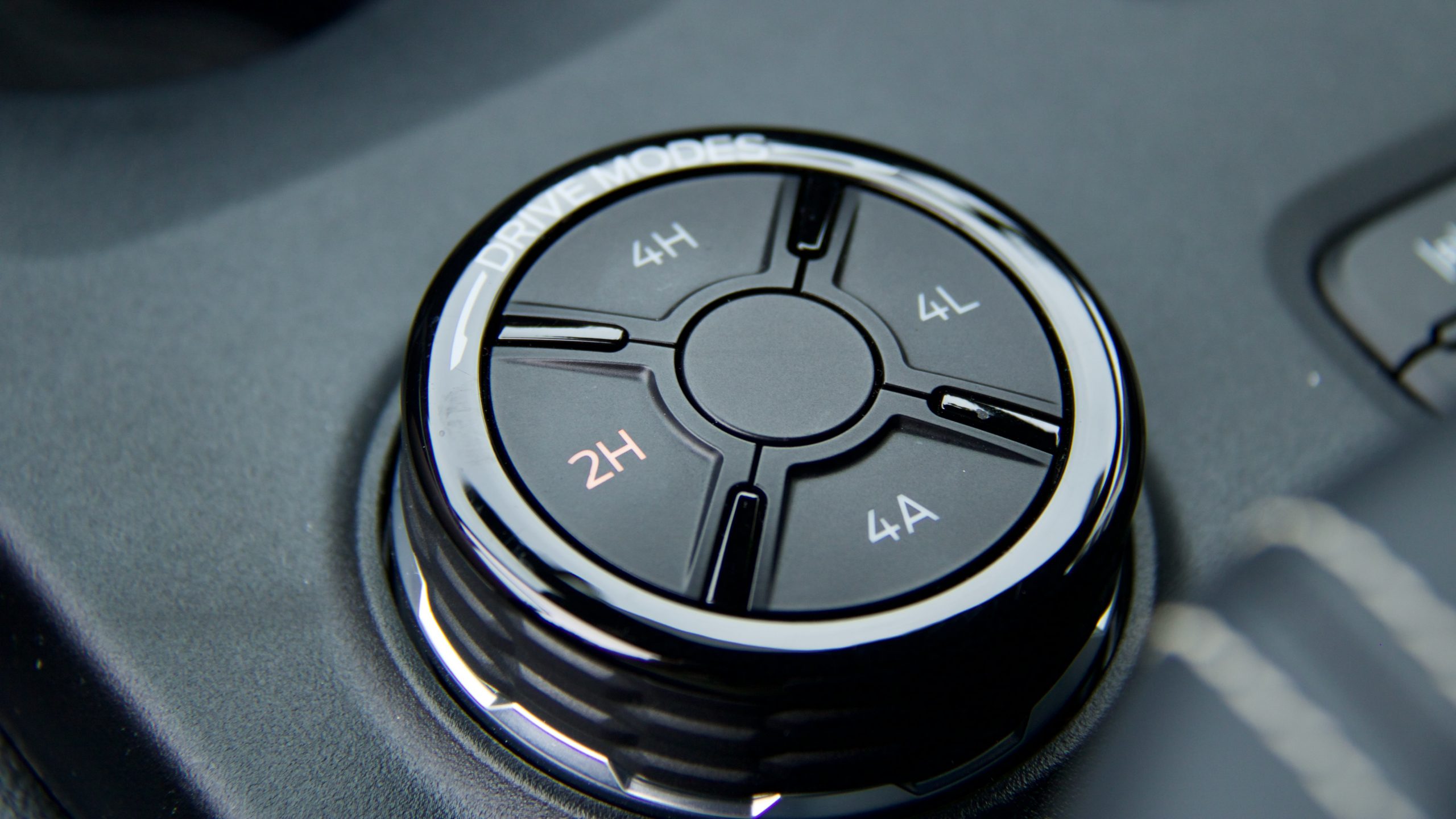
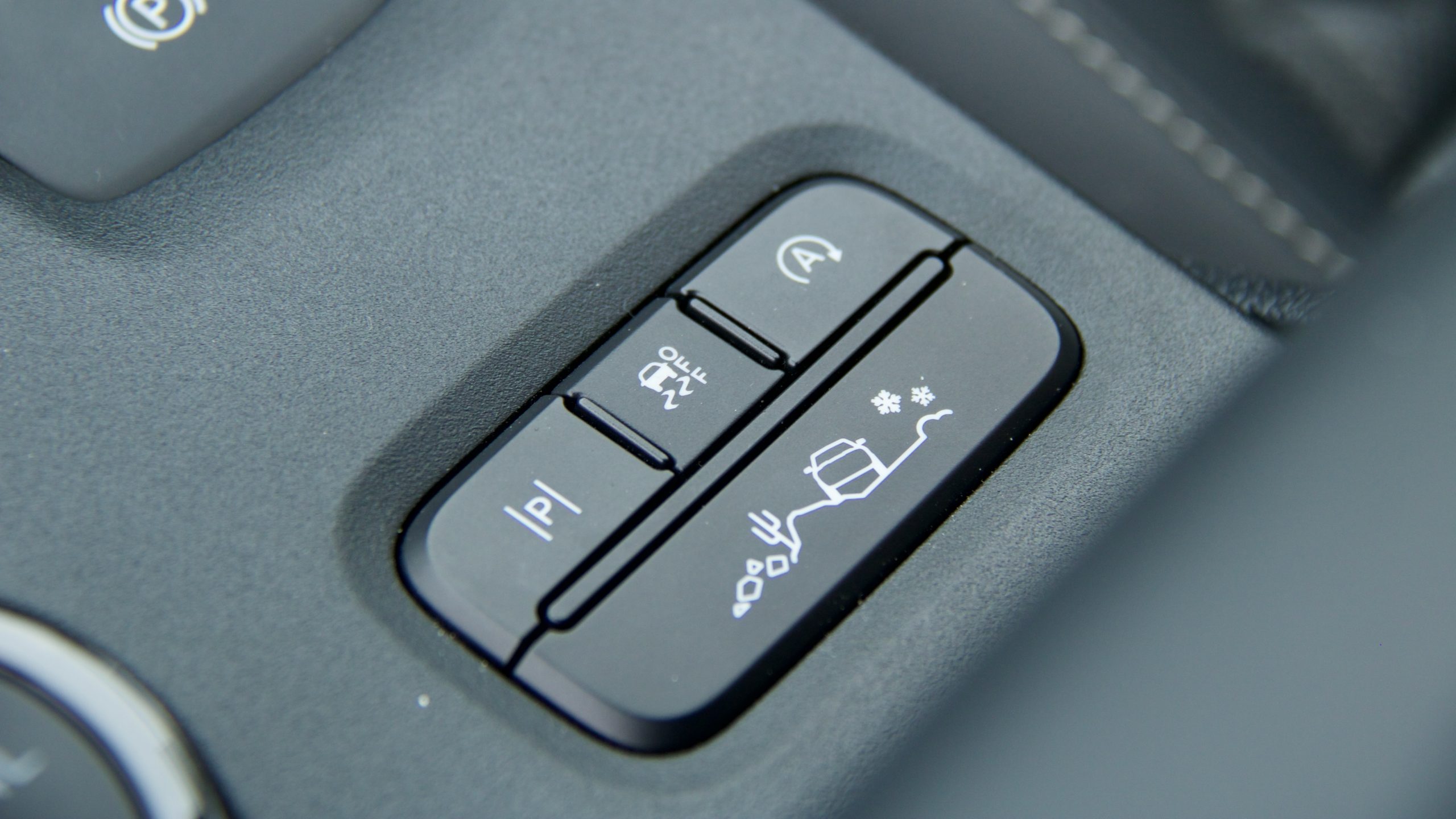
Genuinely, our only complaint is with the ride quality in the Platinum variant and its huge 21-inch wheels. However, we have tested the entry-level Ambiente – stay tuned for that review – and it rides really well on its smaller (optional) 18-inch wheels, so we’ll chalk that up to the 21s of the Platinum. It doesn’t ride badly, it’s just busy and buyers carrying families and/or doing lots of off-road driving should choose the no-cost optional 18-inch wheel package with off-road tyres.
Elsewhere in the driving experience, the Everest impresses. Its steering is nicely weighted with good levels of feel, while the lack of road noise is also impressive too. We also really like the active safety equipment that the Everest has – like the rest of the car, the various systems like lane keeping assistance and auto emergency braking feel really well tuned – not like Ford just bought said systems from a supplier purely to meet safety standards and then didn’t calibrate them properly.
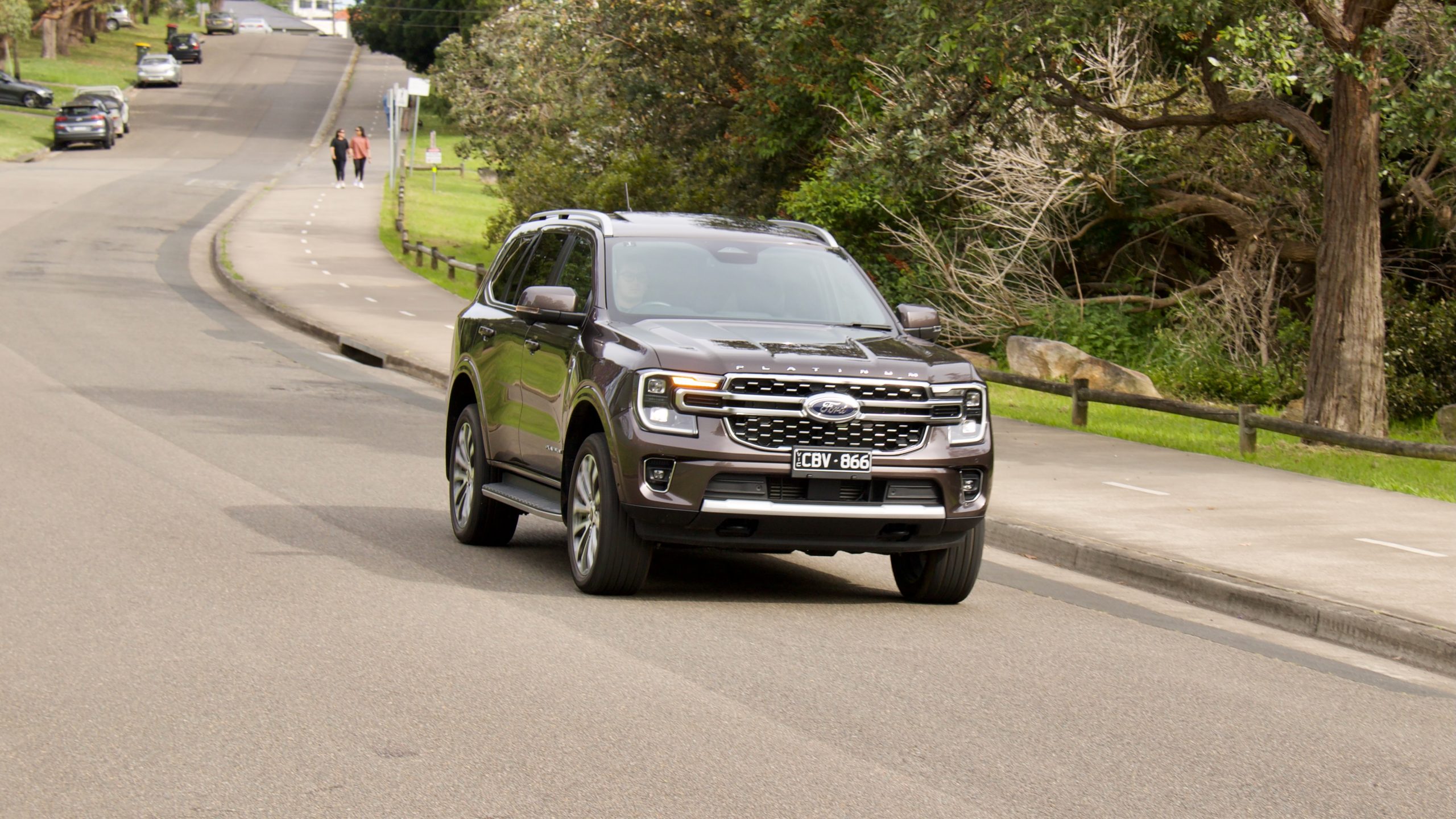
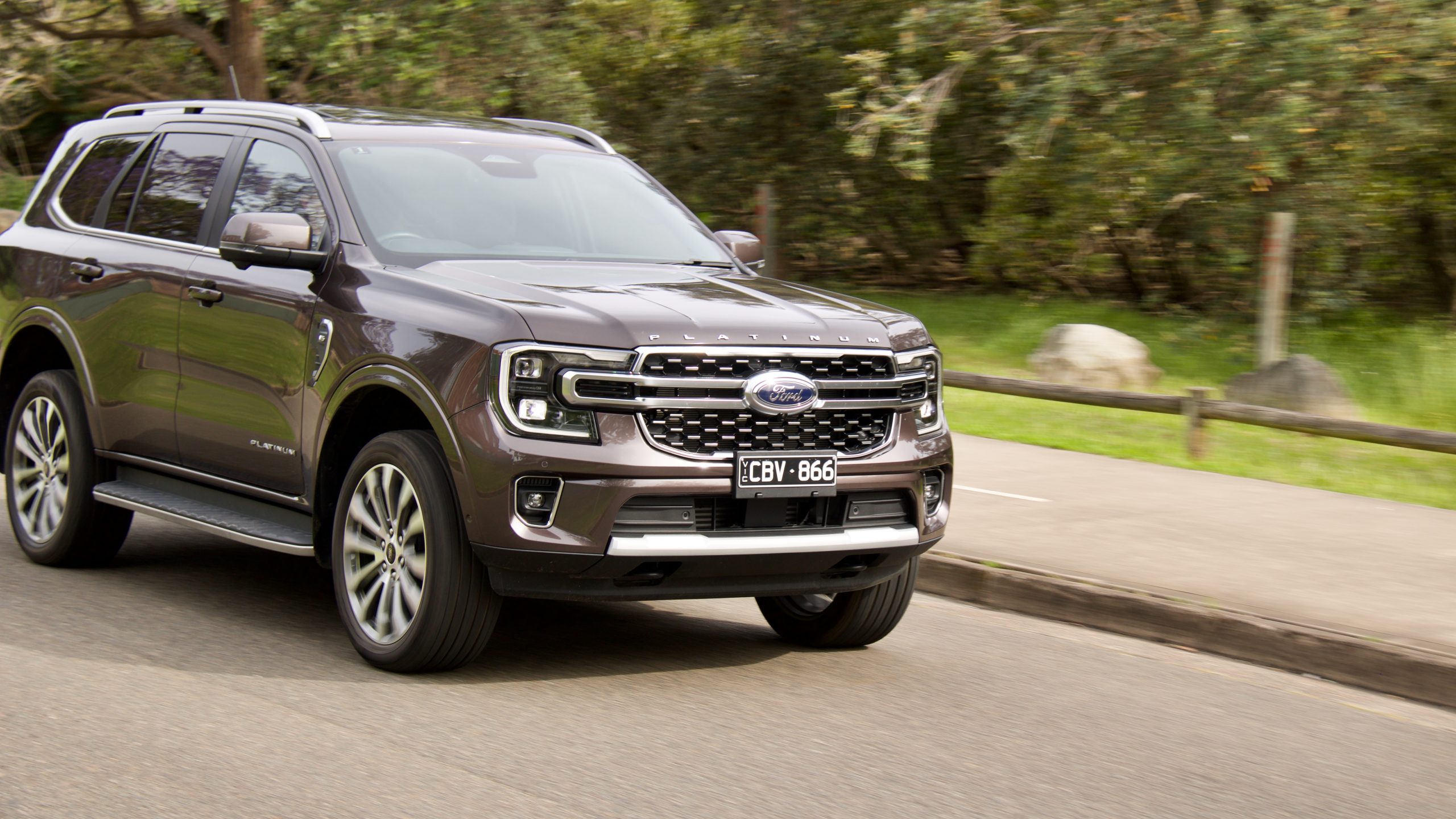
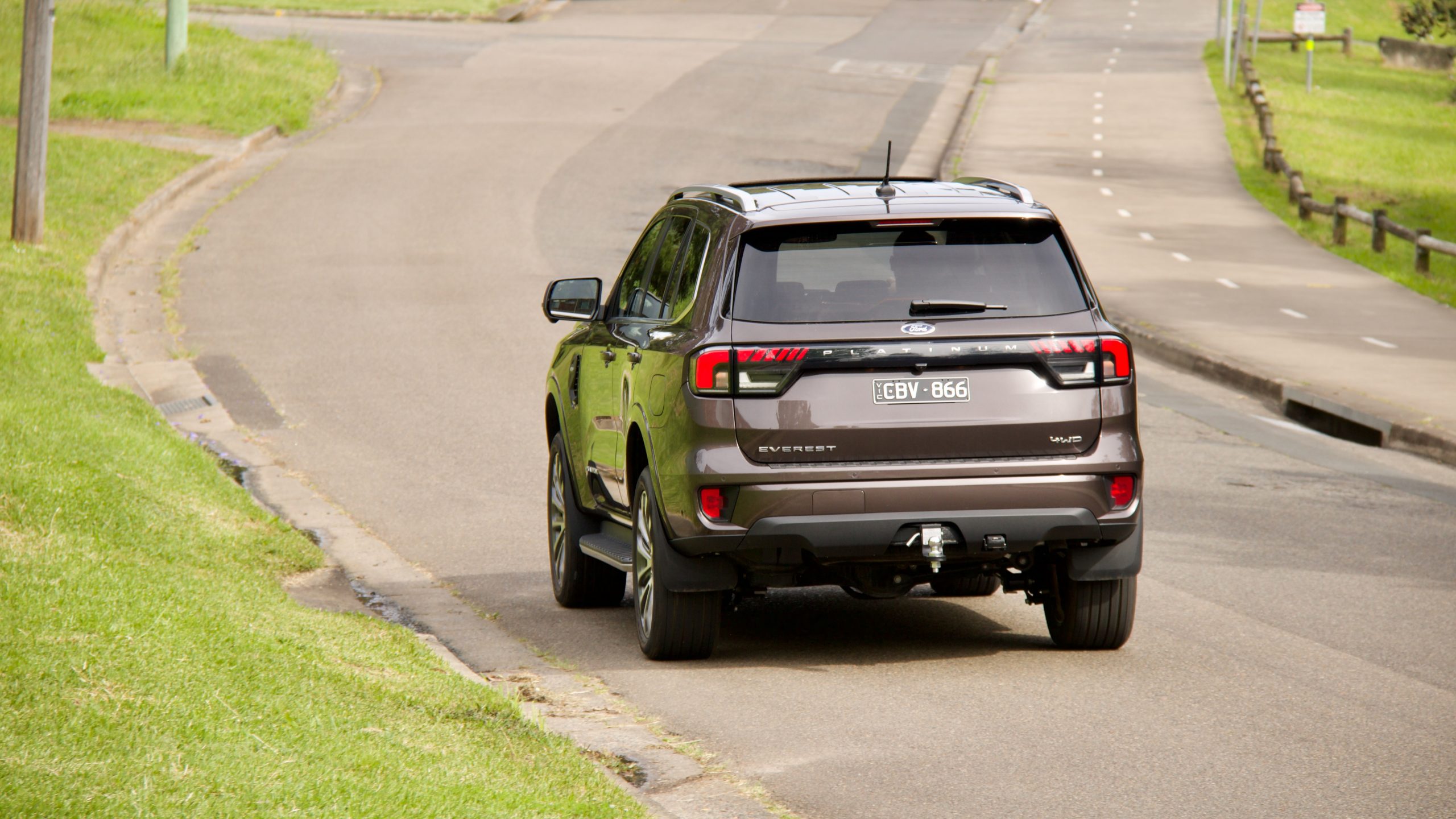
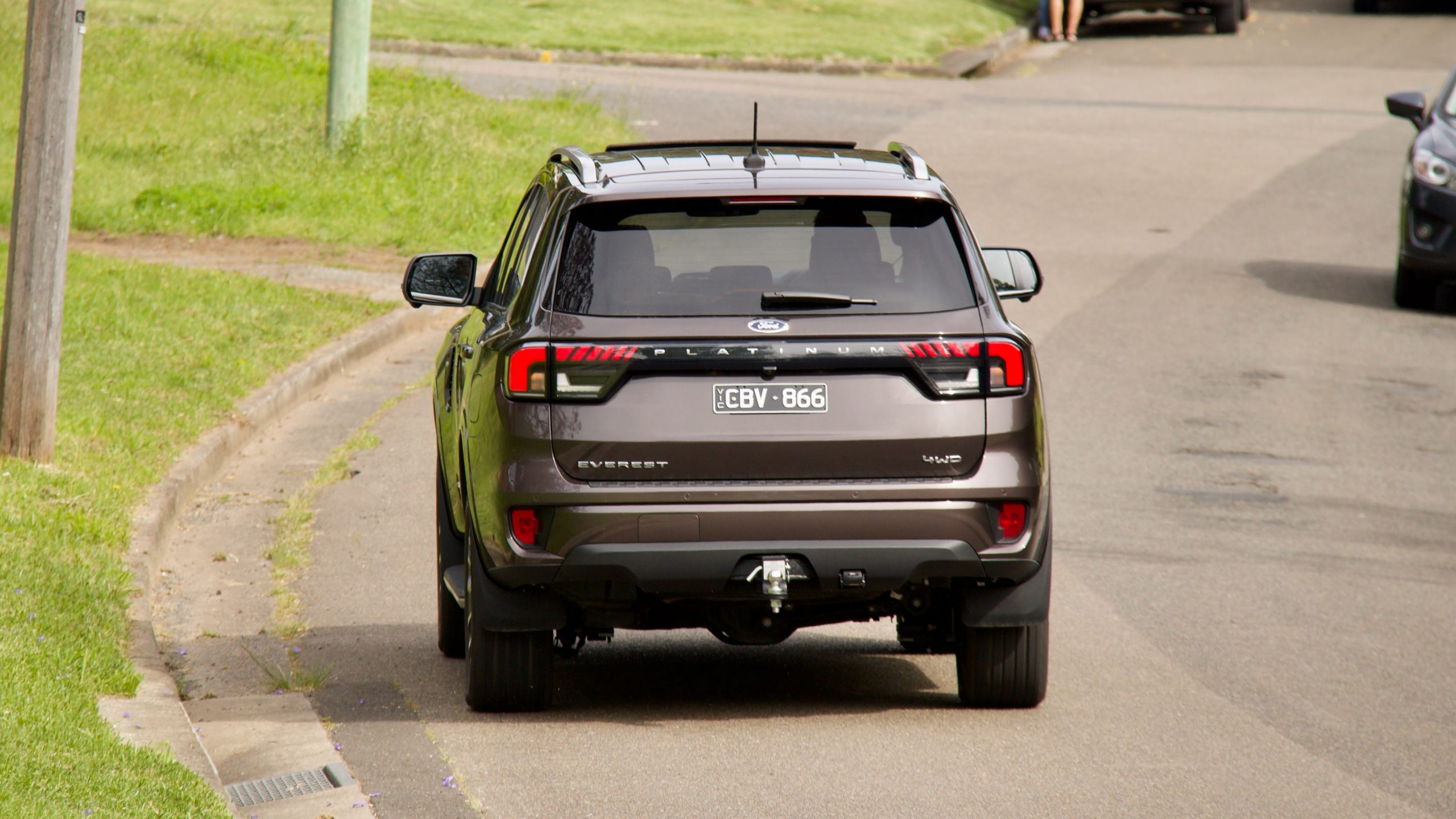
Those looking to tow with their Everest will be pleased to know that it carries the same 3,500kg braked towing rating as the Ranger ute, while it also has good off-road ability thanks to its permanent all-wheel drive system. While we didn’t get a chance to do off-road driving in our time with it, other local media reports suggest that it has great off-road ability – especially thanks to its locking rear differential, selectable off-road driving modes and its lockable 50/50-split four-wheel drive system.
Interior & Practicality: 9.0/10
As expected being based on the Ranger, the 2023 Ford Everest Platinum takes the Ranger’s cabin and adds a higher fit and finish, even compared to the top-spec Ranger Wildtrak and Raptor. There are soft touch materials seemingly everywhere in the cabin – on the dashboard, the door tops and even the centre console. The leather used on the steering wheel and seats is also of a great quality – it’s far superior to the previous-generation Everest, that’s for sure.
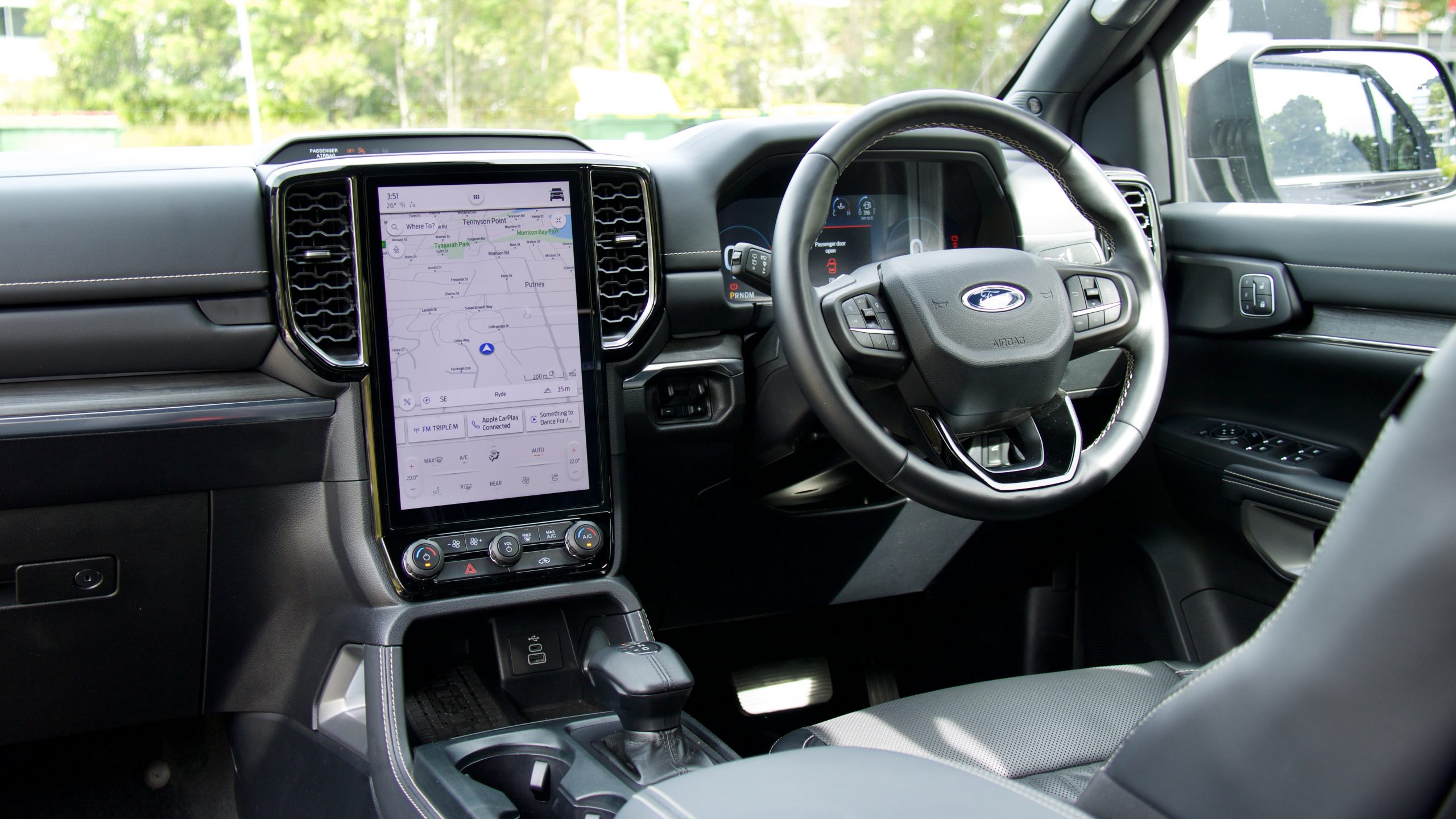
It’s quite a practical cabin as well. There are big door bins, a dual-level glovebox, a big centre console bin, a big tray below the centre screen with a wireless charger and a USB-A and USB-C charging port, big cupholders on the centre console and even some pull-out cup holders on the dashboard.
Centre of the Everest Platinum’s cabin is a 12.4-inch portrait touchscreen that’s fully loaded with wireless Apple CarPlay and Android Auto, satellite navigation with live traffic, digital radio and even features like a drawing pad. The screen is very easy to use, bright and has excellent quality. The 12-speaker Bang & Olufsen sound system is also quite good.
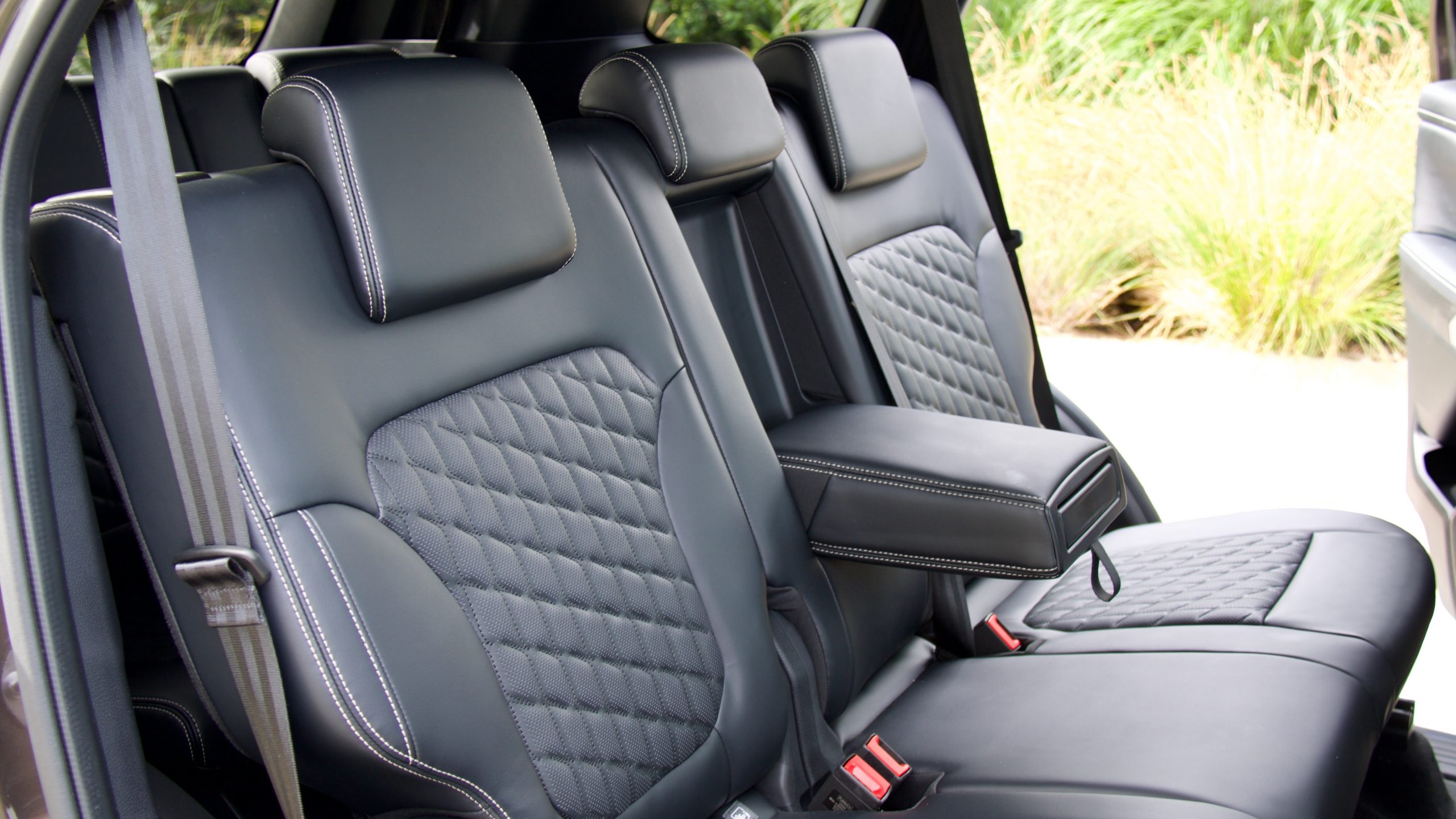
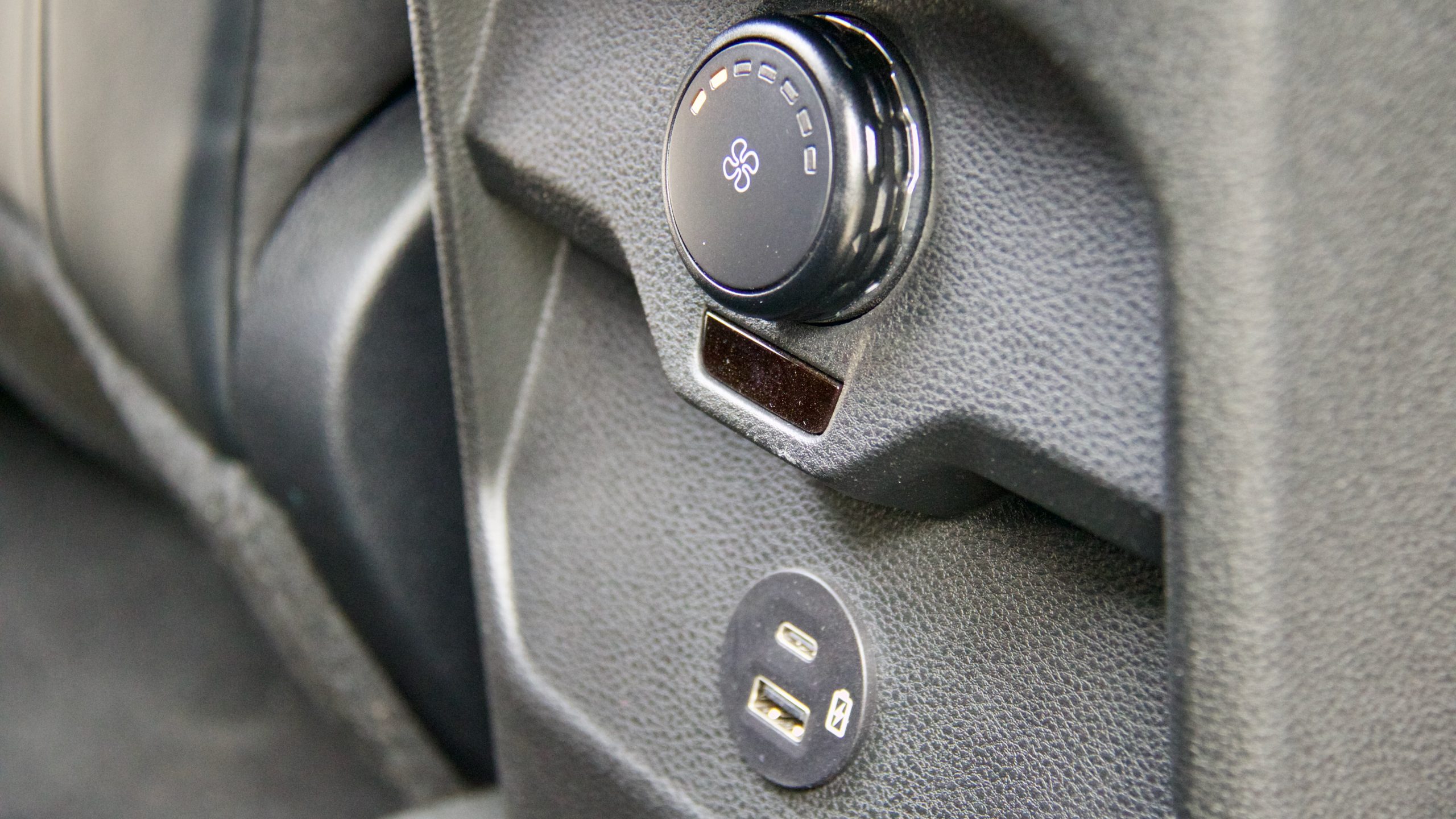
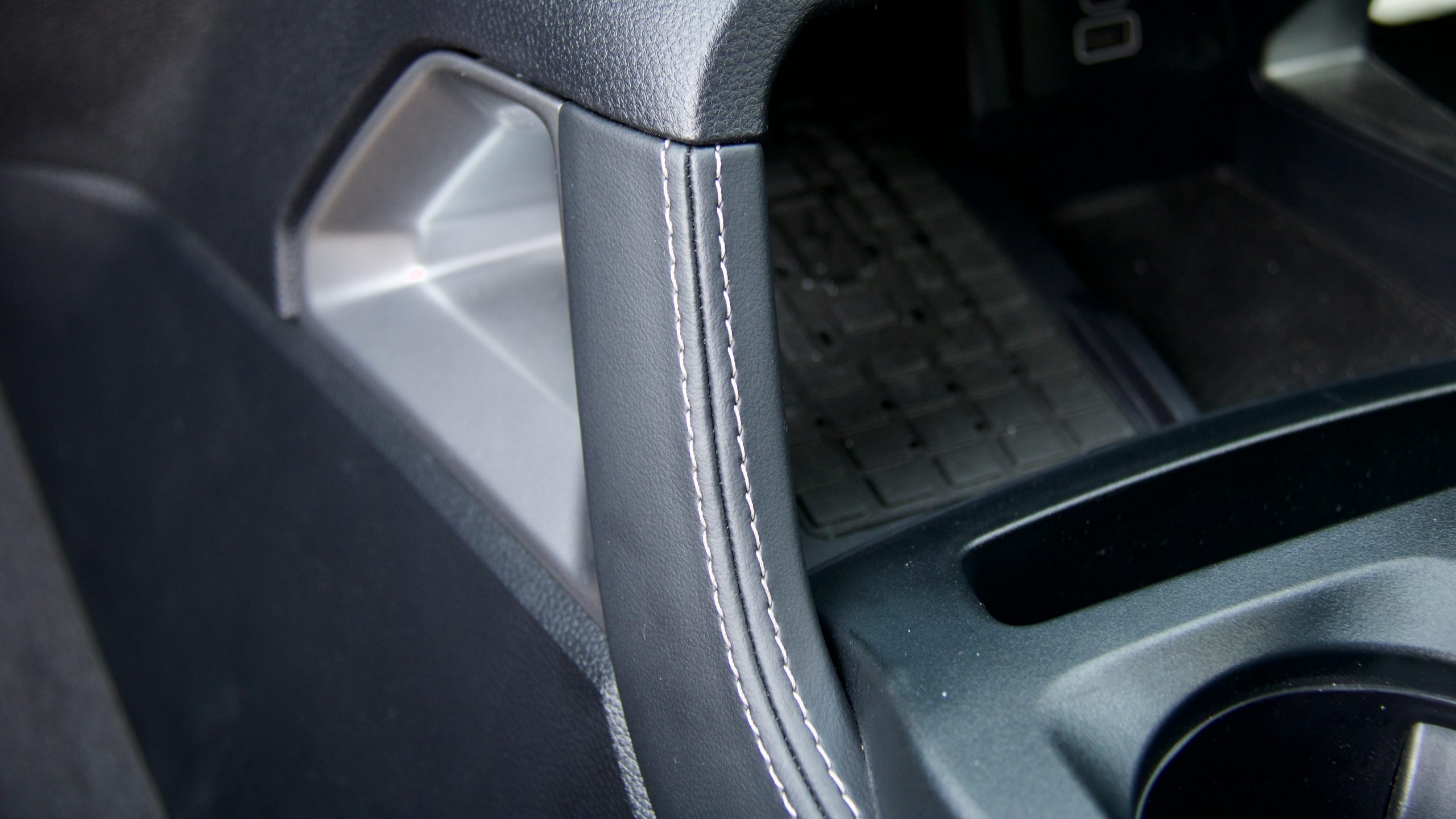
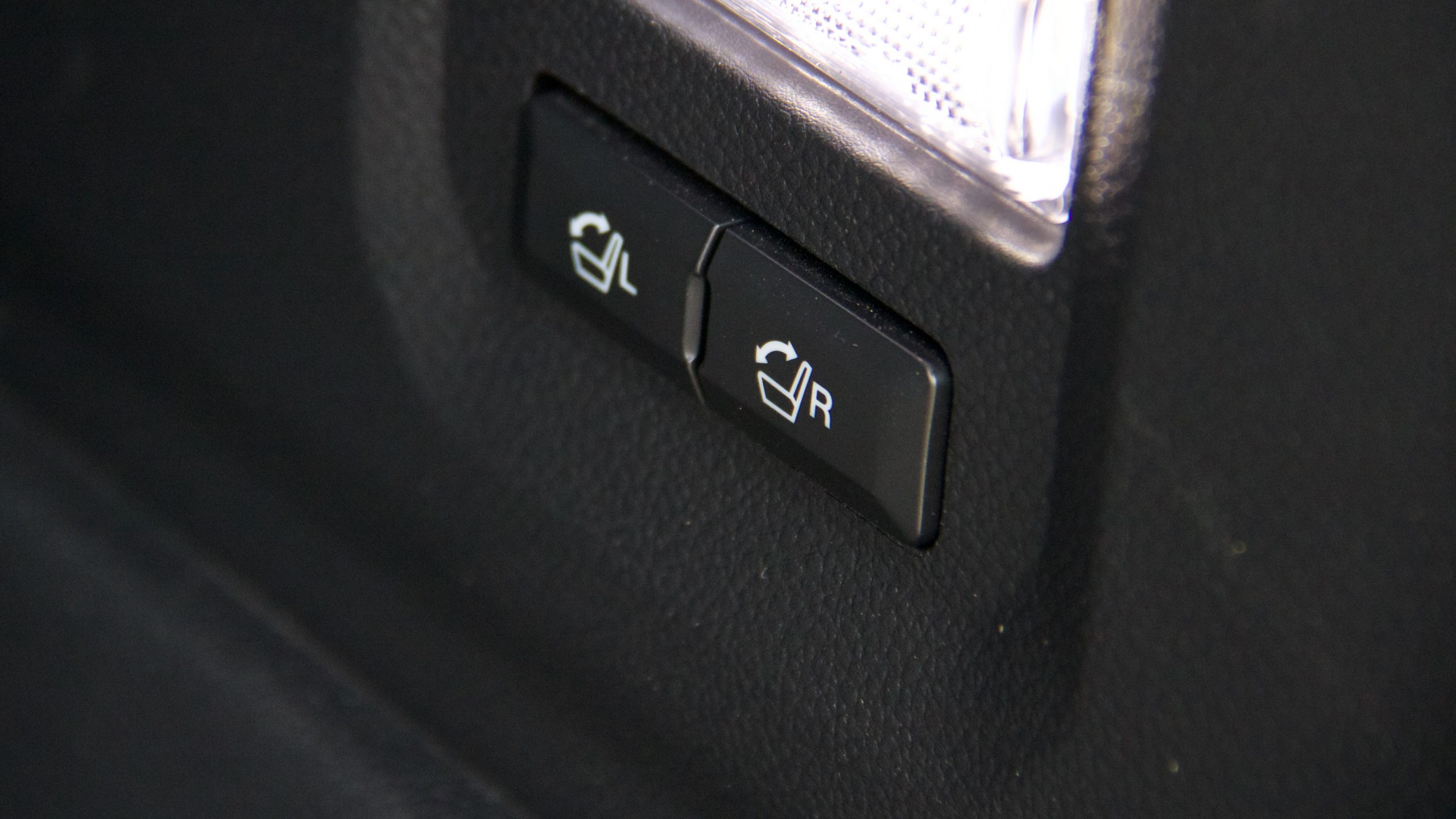
The middle row of the Everest is spacious and well featured – plus, the soft touch materials from the front carry over. Despite the panoramic sunroof, there is ample space for even taller adults in the middle row, while there are heated outboard seats, a fan speed controller for the rear climate zone (with vents in the roof for both the second and third rows) and a USB-A and a USB-C charging port.
The Everest’s third row features cup holders and airbag coverage too, though no charging ports. Access to the third row is reasonable because the seats fold forward easily, though taller adults will be cramped there as headroom isn’t great.
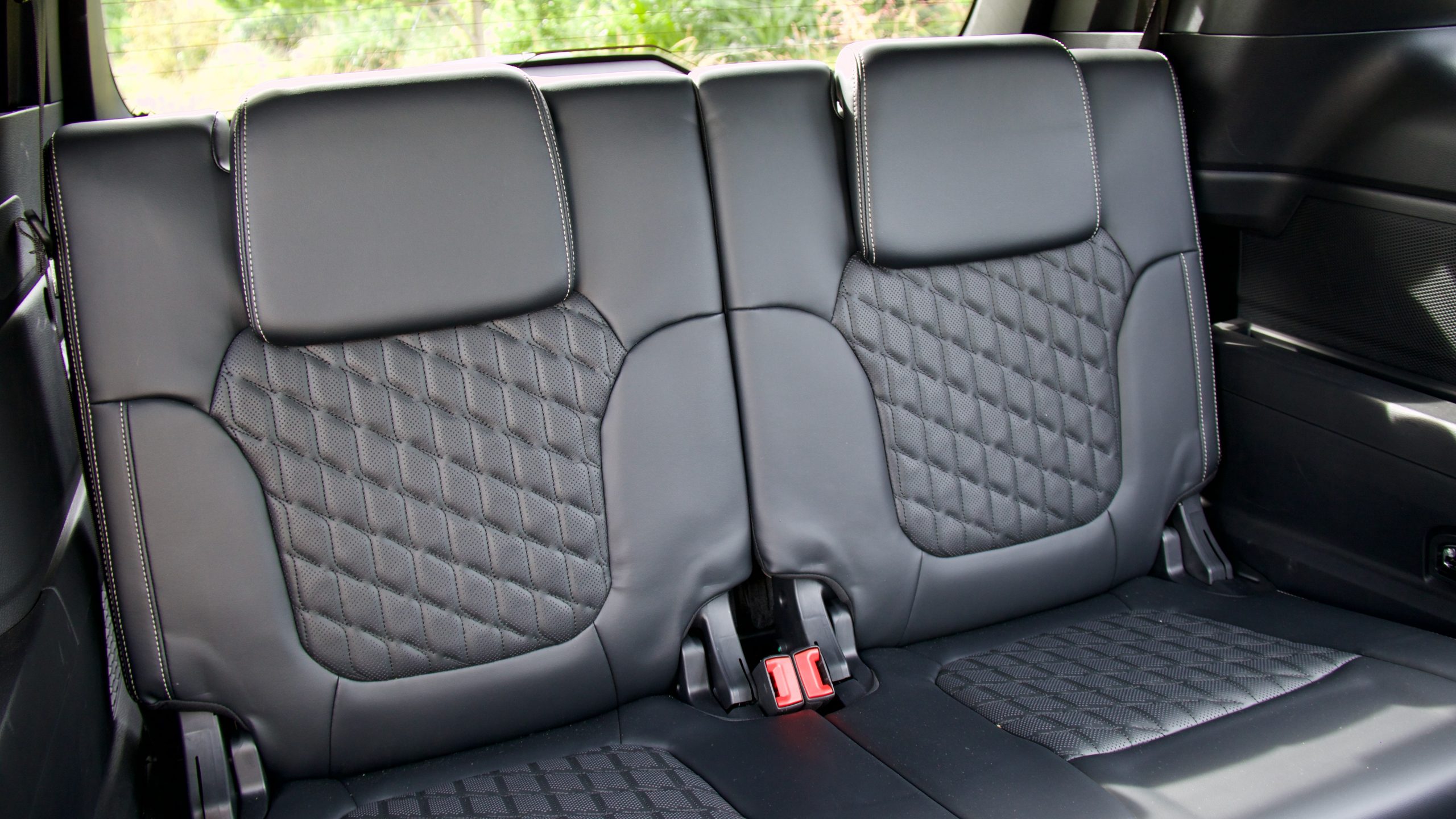
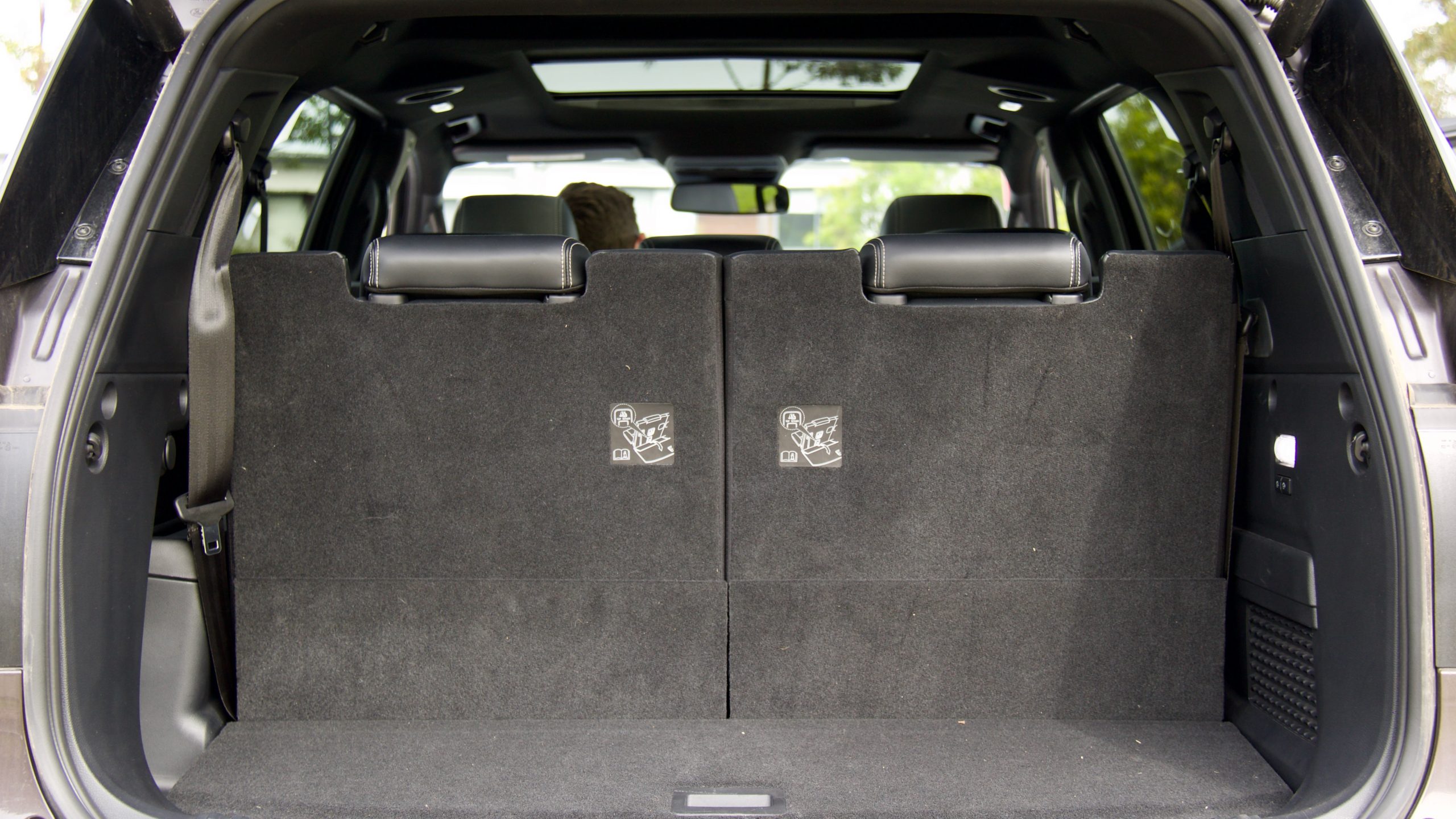
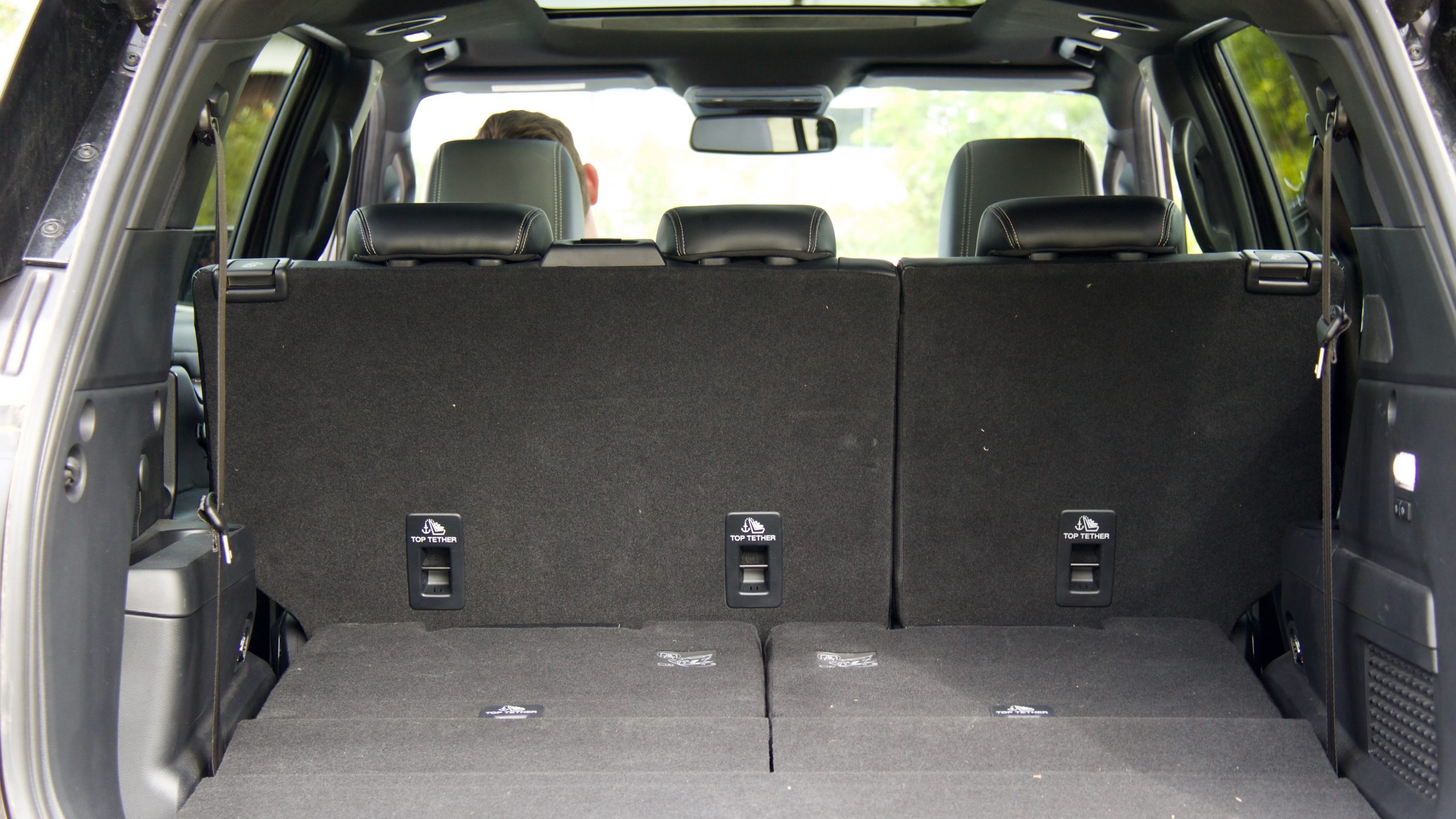
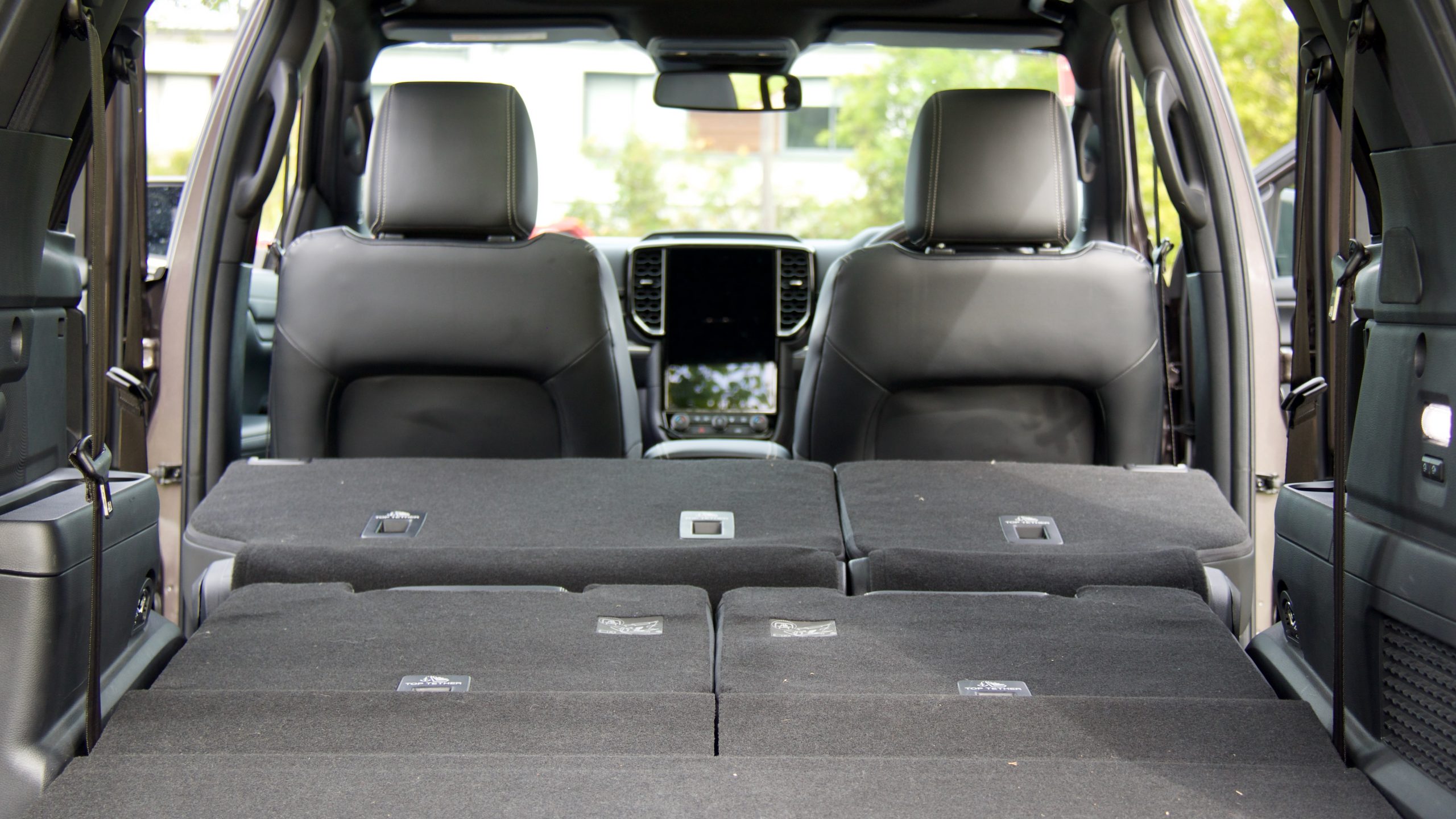
The boot of the Everest is well featured and well finished with electric folding for the third row, some hooks, under floor storage and a 12V socket. Behind the third row of seating lies 259-litres of space, which expands to 898L with just the middle row erect and to 1,818L with all rear seats folded.
Service & Warranty: 9.0/10
Like other new Ford products, the 2023 Ford Everest Platinum is equipped with a five-year/unlimited km warranty with up to eight years of roadside assistance if serviced at a Ford dealership. The Everest’s service intervals are once yearly/every 15,000km and five years/75,000km of servicing costs an excellent $1,666 ($333 per service). The competitors to the Everest all offer similar five-year/unlimited km warranties – though Mitsubishi offers up to 10 years if serviced at a dealer and Isuzu features a six-year/150,000km warranty as standard. Isuzu features up to seven years of roadside assistance, Mitsubishi offers up to four years, Land Rover has five years and Toyota has none.
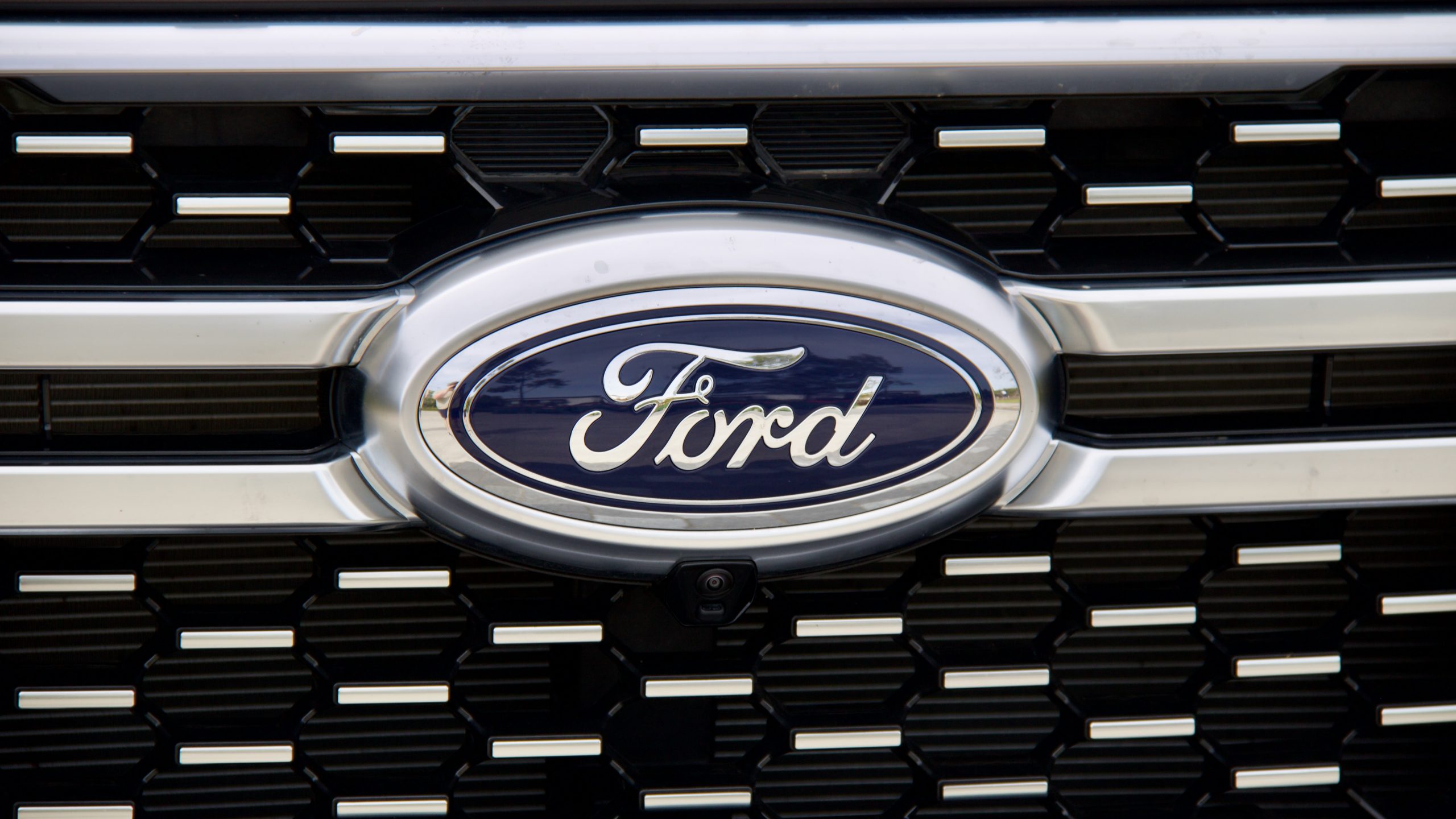
Service intervals are generally once yearly/every 15,000km – though the Prado’s intervals are annoyingly once every year or every 10,000km, while the Discovery’s are a long once every two years/every 34,000km. Five years/100,00km of servicing for a Prado costs $3,692, a five year/130,000km service pack on a Discovery costs $2,650, five years/75,000km of servicing costs $2,315 for the MU-X and the same for a Pajero Sport costs $2,495 – all of them a lot more than the Everest’s service costs.
The 2023 Ford Everest Platinum DiscoverAuto Rating: 8.7/10
As we’ve discovered with the latest-generation Ranger on which it’s based, the 2023 Ford Everest Platinum is a big step forward on the already competent previous-generation Everest. It takes that car’s all-round excellence and adds more performance, a lot more equipment, a lot more technology and in the case of the Platinum, a lot more class as well. Why’s it more relevant to Australians than the Ranger? Look at the sales of SUVs and you’ll find out.
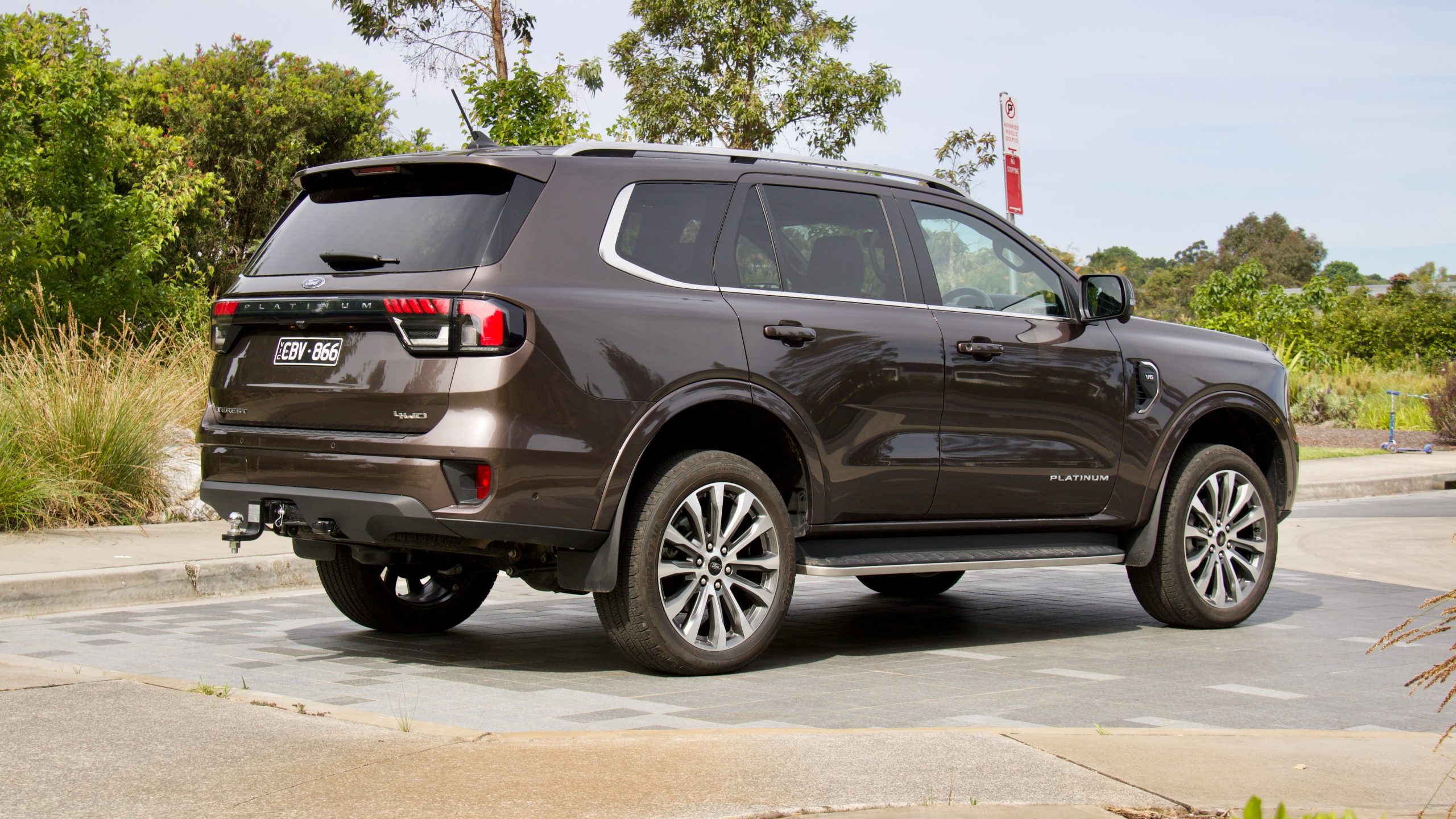
It’s not perfect – the 21-inch wheels of the Platinum degrades the ride quality compared to lower specced variants and it’s getting quite expensive – but the Everest Platinum is a damn good product. We particularly love how well engineered it is, and how it feels just as capable no matter the model chosen. It also injects a big boost in capability into a segment that otherwise feels largely agricultural – yes, it does so for a price, but overall, we think the 2023 Ford Everest Platinum is a world beating car. It’s excellent.
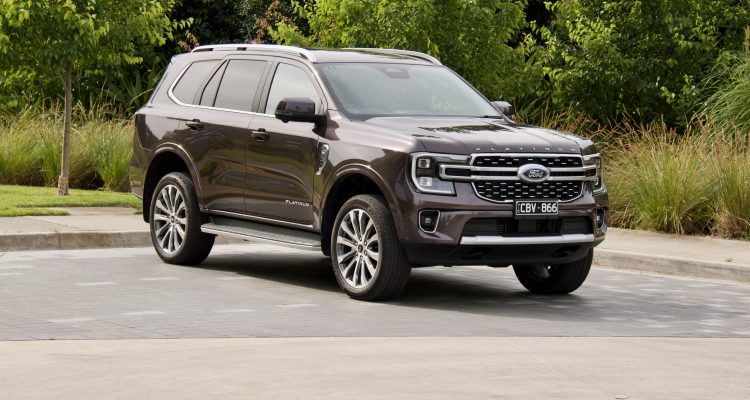
Excellent review . It has helped me to decide to place ain order for a Platinum
Thank you for reading, Neil! We’re glad that you enjoyed it. Please let us know how your Everest is when you eventually receive it.
– Jake Williams, editor @ DiscoverAuto